talks with the Leaf about how his grow light company changed the business and lead to greater efficiency in the


#26 | OCT. 2022THE ENLIGHTENED VOICE INDEPENDENT CANNABIS JOURNALISM SINCE 2010FREE / LEAFMAGAZINES.COM SMOKE TECH EVOLUTION From the simple pipe and bong to advanced laser dab rigs, vapes and more — learn how we got to today! >> Pg. 28 LEAF TECH ROUNDUP Leaf Nation staff and contributors share their favorite new gadgets and Cannabis tech products sure to change your life and high! >> Pg. 30 DUTCH LIGHTING INNOVATIONS Jair Velleman
garden. >> Pg. 38 THE TECH ISSUE NORTHEAST HOW PUFFCO FOUNDER & CEO ROGER VOLODARSKY IS REVOLUTIONIZING THE CANNABIS INDUSTRY, ONE AMAZING DEVICE AT A TIME. >> Pg . 34-37



FOLLOW US ON INSTAGRAM @NWLEAF @OREGRONLEAF @MARYLANDLEAF @CALIFORNIALEAFMAG @AKLEAFMAG @NORTHEASTLEAFMAG leafmagazines.com leafmagazines.com FEATURES SPECIALS NEWS PODCAST CULTURE REVIEWS LEAF PICKS
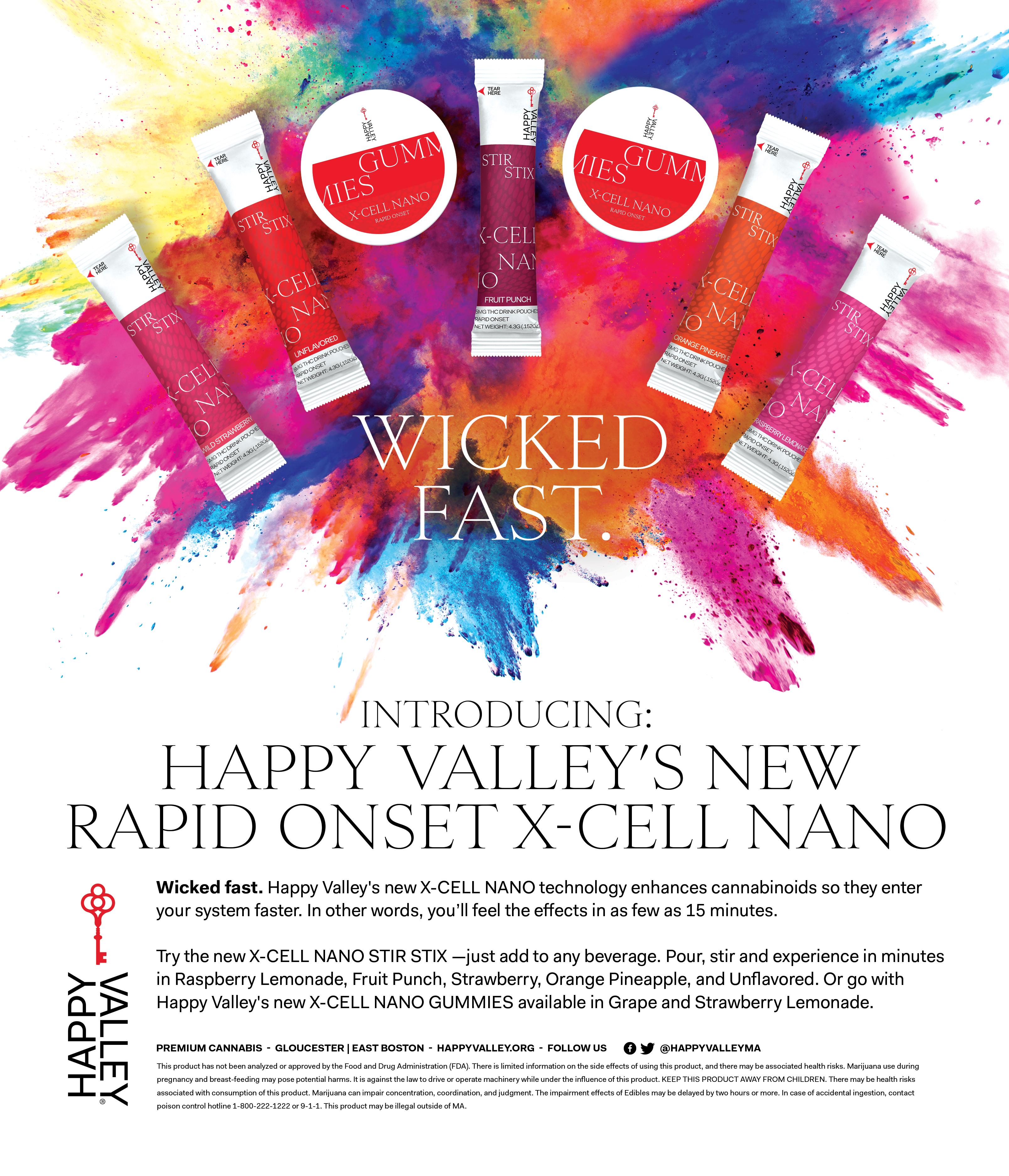


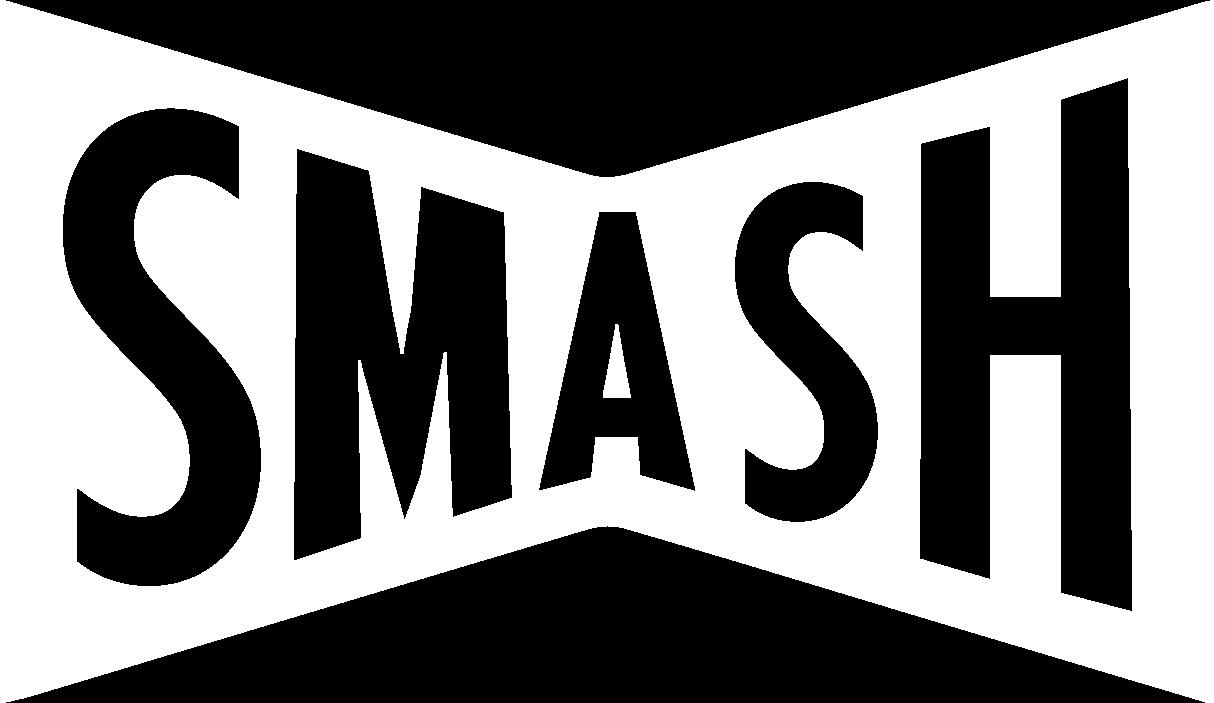

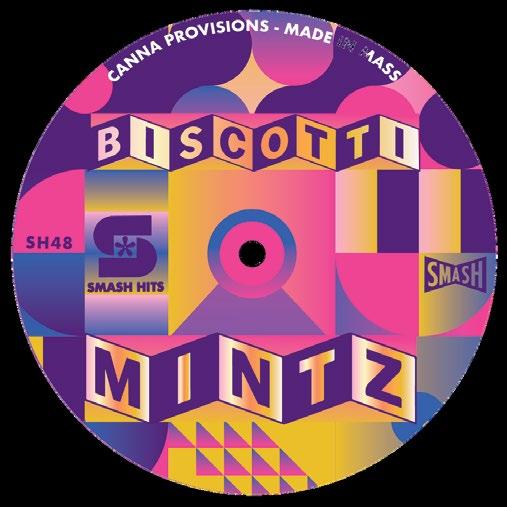





cpioneercannabiscompany.com ampfirecannabis.com Carried by Cthese arried by these retail rpartners: etail partners: Chemdog's waited 30 Cyears hemdog's waited 30 years to bring you SMASH tHITS o bring you SMASH HITS cannabis! cannabis! Please Consume Responsib y This product may cause impairment and may be hab t forming For use only by adults 21 years of age or older Keep out of the reach of chi dren This product has not been analyzed or approved by the Food and Drug Administration (FDA) This s limited information on the side effects of us ng this product, and there may be associated health risks Marijuana used during pregnancy and breast feeding may pose potential harms It is aga nst the law to drive or operate machinery when under the influence of this product KEEP THIS PRODUCT AWAY FROM CHILDREN There may be hea th risks associated with consumption of this product Marijuana can mpair concentration coordination and udgement The effects of Ed b es may be delayed by two hours or more In case of accidental ngestion, contact poison control hotline 1 800 222 1222 or 9 1 1 This product may be illega outside of MA hand trimmed cannabis, grown by chemdog NEW STRAINS NOW AVAILABLE!


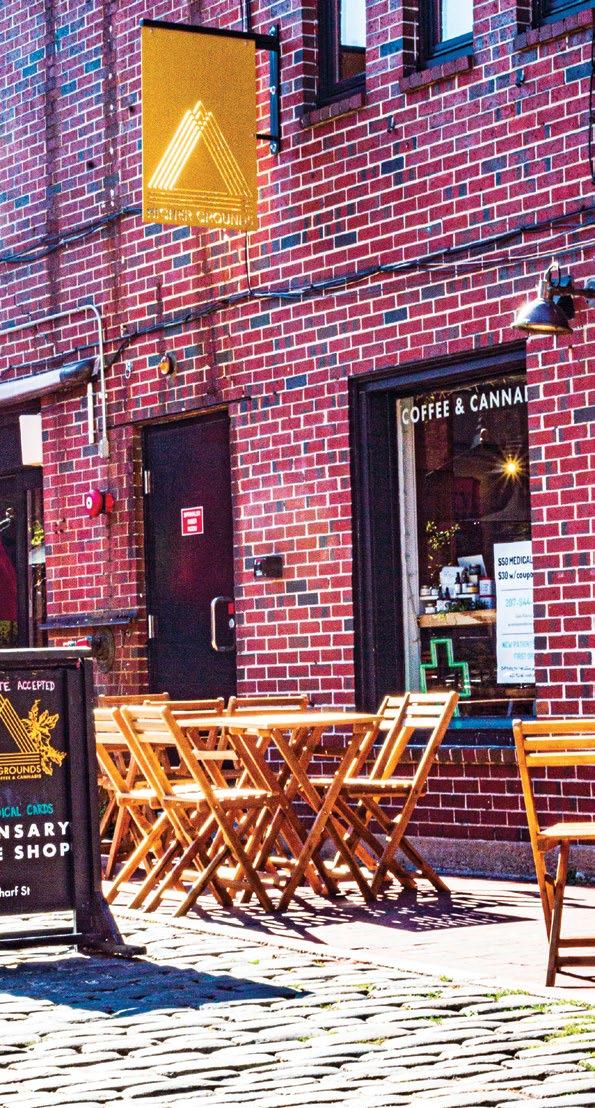
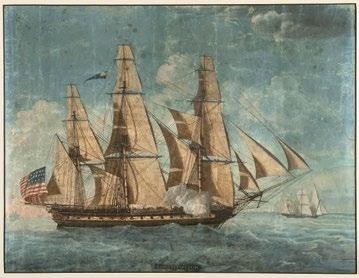
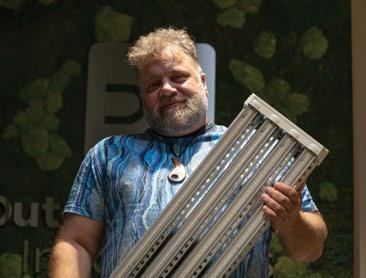
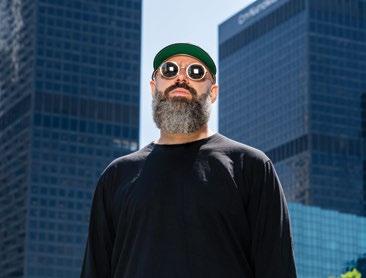
09 EDITOR’S NOTE 10 NATIONAL NEWS 14 LOCAL NEWS 20 HIGHER GROUNDS REVIEW 24 STRAIN OF THE MONTH 28 THE EVOLUTION OF SMOKE TECH 30 LEAF NATION TECH ROUNDUP 34 PUFFCO PROFILE REVIEW 38 JAIR VELLEMAN PROFILE 40 CONCENTRATE OF THE MONTH 42 TOPICAL OF THE MONTH 44 CANNTHROPOLOGY 46 STONEY BALONEY 20 CHARLES TAGGART DEREK BISSONNETTE @DBFOODPHOTO PYRON HEIJMINK JUSTIN L. STEWART 3438 JAIR VELLEMAN THE MAN BEHIND DUTCH LIGHTING INNOVATIONS SHARES HIS WISDOM FROM A LIFE OF GARDENING ROGER VOLODARSKY PUFFCO’S FOUNDER AND CEO TALKS WITH THE LEAF’S BOBBY BLACK ON INNOVATION COURTESY OF TODD MCCORMICK CANNTHROPOLOGY HEMP AND HUMANITY ARE A LONG PARTNERSHIP 44LEAFMAGAZINES.COM ocT. 2022 6 NORTHEAST [issue #26OCT. 2022 SHOP REVIEW HIGHER GROUNDS IN MAINE LETS CONSUMERS TRY CANNABIS AND COFFEE IN AN INVITING ENVIRONMENT. THE tech ISSUE 30 LEAF NATION’S STAFF AND CONTRIBUTORS SHARE THEIR FAVE TECH GEAR TO CHECK OUT IN THIS EXCLUSIVE ROUNDUP. TECH ROUNDUP TECH ROUNDUP
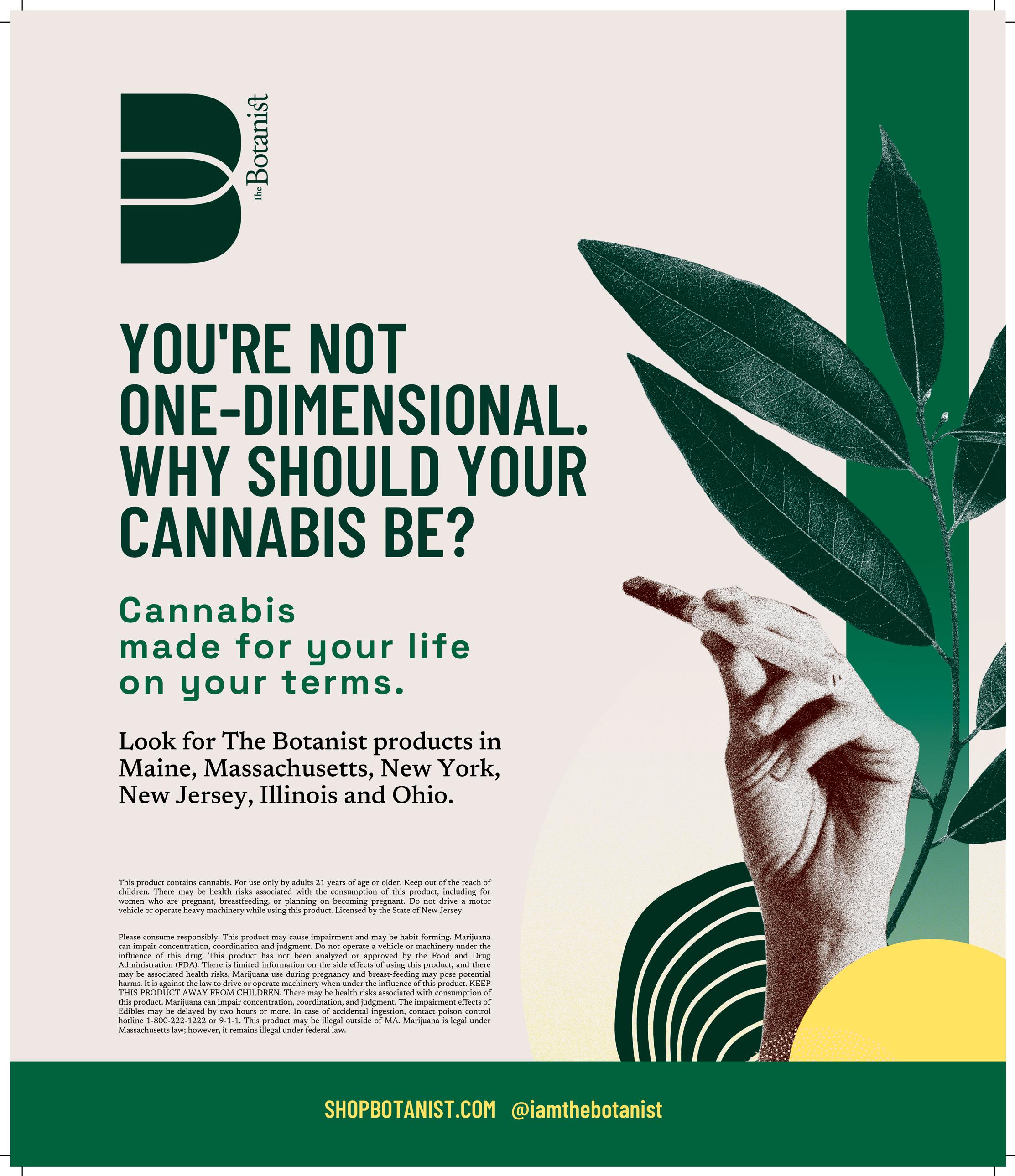

WES ABNEY CEO
wes@leafmagazines.com
MIKE RICKER OPERATING PARTNER
ricker@leafmagazines.com
TOM BOWERS CHIEF OPERATING OFFICER tom@leafmagazines.com
DANIEL BERMAN CREATIVE DIRECTOR daniel@leafmagazines.com
MIKE GIANAKOS SENIOR EDITOR mikeg@leafmagazines.com
DAN VINKOVETSKY SENIOR EDITOR dan@leafmagazines.com 844-4NELEAF

MICHAEL CZERHONIAK SALES DIRECTOR michael@leafmagazines.com
O’HARA SHIPE ONLINE EDITOR ohara@leafmagazines.com
MEGHAN RIDLEY COPY EDITOR
meghan@leafmagazines.com
ABOUT THE COVER
For our magazine’s first-ever Tech Issue, the founder and CEO of Puffco, Roger Volodarsky, was a worthy cover figure. From his company’s headquarters in downtown Los Angeles, Volodarsky oversees a growing empire of Cannabis consumption devices which haveforevermorphedthecommunity.

But as the Leaf’s Bobby Black makes clear in his fascinating profile, this is one tech mogul who would rather stay behind the scenes and let his products tell the story.
Making the pictures throughout this piece was the art of California-based freelance photographer Justin L. Stewart, who has freelanced for the Leaf since 2021.
PHOTO by JUSTIN L. STEWART @JUSTNLSTEWART
CONTRIBUTORS
DREW BARDANA, ILLUSTRATION
BOBBY BLACK, DESIGN + FEATURES

JOSHUA BOULET, ILLUSTRATION
TOM BOWERS, FEATURES
JENN DOE, SALES
EARLY, PRODUCTION
WYATT EARLY, REVIEWS
STEVE ELLIOTT, NATIONAL NEWS
MIKE GIANAKOS, FEATURES
BAILEY JONSON, FEATURES + PHOTOS

SARA MILLS-GAINES, SALES
BOBBY NUGGZ, FEATURES + PHOTOS
LEXI PADUSSIS, FEATURES + SALES
JEFF PORTERFIELD, DESIGN
JESSE RAMIREZ, DESIGN
MIKE RICKER, FEATURES
MIKE ROSATI, PHOTOS
JUSTIN L. STEWART, PHOTOS
CHARLES TAGGART, FEATURES + PHOTOS
JAMIE VICTOR, DESIGN
DAN VINKOVETSKY, FEATURES
NATE WILLIAMS, FEATURES
Editor’s Note

Thanks for picking up the first Tech Issue of the Leaf!
When I first started smoking weed, the pinnacle of tech was turning an apple or a soda can into a smoking device. Personally, I always loved the apple pipe, as it turned into a healthy snack afterwards and there was no evidence left behind to get in trouble for!
Luckily for Cannabis lovers, the legalization movement has led to investment and innovation into fun and creative ways to get baked. From home infusers for making Cannabis cooking oil, honey and topicals, to the variety of vaporizers and gear for taking the perfect dab – there’s a plethora of new ways to consume the plant we all know and love.
This month’s cover story comes to us via Puffco Founder and CEO, Roger Volodarsky. Unless you’ve been stoned and living under a rock for the last few years, you likely know the name Puffco and have tried their line-up of amazing electronic vaporizers. Puffco has definitely changed the game for the portable consumption of Cannabis, and they continue to lead the way in combining tech with pot – including the release of new toys like the Proxy, and the super useful Hot Knife dab tool. Check out Bobby Black’s interview and dive into the world of Puffco, which we get a glimpse of on our iconic cover.

As there’s no shortage of great companies making Cannabis tech these days, our Leaf team also compiled a selection of our favorite gear for getting high. Check out our roundup with innovations ranging from portable terp fridges to joint tips, and everything else you might need to up your stoner game or add to a holiday shopping list! While this is our first Tech Issue, I definitely expect to see it coming back for years to come as the world continues to embrace Cannabis use in a modern format.
So whether you’re an old school joint roller (we have a new machine for that) or the most trendy terp hunter, there’s a piece of tech to help you get more stoned – and as always, a bunch of other Leaf content for your enjoyment.
Thanks for reading, and keep your e-nails charged and at low temps!
 NORTHWEST LEAF / OREGON LEAF / ALASKA LEAF / MARYLAND LEAF / CALIFORNIA LEAF / NORTHEAST LEAF
THE ENLIGHTENED VOICE
NORTHWEST LEAF / OREGON LEAF / ALASKA LEAF / MARYLAND LEAF / CALIFORNIA LEAF / NORTHEAST LEAF
THE ENLIGHTENED VOICE
“OUR LEAF TEAM ALSO COMPILED A SELECTION OF OUR FAVORITE GEAR FOR GETTING HIGH..”
-Wes Abney leafmagazines.com 9
OCT. 2022 Exclusive Cannabis Journalism CONNECT WITH NORTHEAST LEAF NORTHEAST LEAF MAG @NORTHEAST LEAFMAG ESTABLISHED 2010
#NORTHEASTLEAF | @NELEAFMAG ISSUU.COM/NWLEAF READ PAST ISSUES IN OUR FREE ONLINE ARCHIVE
WES ABNEY We are creators of targeted, independent Cannabis journalism. Please email us to discuss advertising in the next issue of Northeast Leaf Magazine. We do not sell stories or coverage. We can offer design services and guidance on promoting your company’s medicinal, recreational, commercial or industrial Cannabis business, product or event within our magazine and on our website, LeafMagazines.com. Email michael@leafmagazines.com to start advertising with NE Leaf!
& FOUNDER
WORLD ANTI-DOPING AGENCY CONTINUES CANNABIS BAN
The World Anti-Doping Agency is likely to keep a ban on marijuana use by athletes in 2023.
The agency continued the ban despite pressure to change the policy on Cannabis after U.S. sprinter Sha’Carri Richardson was barred from the Summer Olympic Games after testing positive last year.
With the continued ban on weed by the body charged with preventing drugs in international sports, athletes who test positive for marijuana in competition will face suspension from eligibility. However, last year WADA announced that it would conduct a scientific review to determine if pot should remain on the banned substances list – receiving the encouragement of the U.S. Anti-Doping Agency to conduct the review, as well as broad support from athletes and politicians.
MIDWEST WICHITA DECRIMS POT; COUNTY COMPLAINS; MAYOR GETS SPICY
First, city council members in Wichita, Kansas (at the urging of the mayor) decided to stop enforcing the pot laws. Then, Sedgwick County commissioners threatened to bill the city when the county enforces the pot laws. As marijuana remains illegal in Kansas, that prompted Wichita Mayor Brandon Whipple to vigorously clap back at the the county.
The marijuana decriminalization ordinance was the mayor’s idea. Whipple called the discussion by Sedgwick County commissioners on a city ordinance change for marijuana possession a “political show.” The mayor added he doesn’t see the county having any legal basis for billing the city on the costs of prosecuting pot possession cases.
“The mayor added he doesn’t see the county having any legal basis for billing the city on the costs of prosecuting pot possession cases.”
County Commission Chairman David Dennis called on staff to look at the possibility of billing Wichita for expenses resulting from handling the cases in district court. “At what point do we start charging the City of Wichita for this process?” Dennis asked. “Because we’re going to bill them for all the people that go into our jail,” he threatened.
But as Mayor Whipple said, “It just feels like a bad civics class on YouTube. There’s no legal way to send us an invoice for the stuff that the county chooses to spend their money on. That’s not how this works.”
CALIFORNIA LAW PROTECTS CANNABIS
USE OFF-THE-CLOCK
California will likely soon become the seventh state to protect workers from losing their jobs if they smoke marijuana when they are off the clock.


State lawmakers in August passed a bill to stop companies from punishing workers who fail certain types of drug tests. The analyses in question do not determine whether a person is high. Instead, they identify metabolites indicative of whether the person has used marijuana in recent days or weeks.
These tests use urine or hair samples to detect a substance the body makes when it breaks down THC. But the THC metabolites can stay in a person’s body for weeks after using marijuana, according to the Mayo Clinic. That shortcoming means that people who fail a marijuana test are often not impaired at all.

Assembly Bill 2188 protects workers from punishment for failing the aforementioned drug analyses – however, companies could still reprimand employees for failing other types. These include tests using saliva, which are reputedly better at determining if a person is currently high.
43% OF YOUNG ADULTS USE CANNABIS
Marijuana use among young adults reached an all-time high last year. In 2021, nearly 43 percent of individuals between the ages 19 and 30 said they had used Cannabis in the past 12 months.
The research was funded by the National Institute on Drug Abuse (NIDA) and conducted by the University of Michigan Institute for Social Research. The Monitoring the Future report found a steady increase in marijuana usage in the age group over the past decade. The numbers rose from 29 percent in 2011 to 34 percent in 2016.
Monitoring the Future research has tracked substance use in the United States for more than three decades.
THE
ARRESTING PREGNANT WOMEN
FOR WEED
a traffic stop in Alabama, a cop found a small amount of marijuana.
Ashley Banks, a 23-year-old woman, admitted to officers that she had smoked weed two days earlier. It was the very same day that Banks learned she was pregnant. She was six weeks along.
It was this disclosure – the fact that she was pregnant – that led Etowah County officials to keep her in jail. But this was done so without a trial, and she was locked up for the next three months –charged with ”chemical endangerment” of her fetus.
Banks fell victim to a weird Alabama law that advocates say Etowah County enforces with disturbing enthusiasm. Pregnant women arrested for drug offenses aren’t even allowed to post bail and go free (the way everyone else is). They have to stay in state custody: either in jail, or in a residential drug rehab program.
The “logic” is that the women are supposedly a danger to their fetuses. Therefore, they supposedly need to be imprisoned by the state for the duration, in order to “protect their pregnancies.”
sports TENNIS STAR UPSET ABOUT POT AT US OPEN
ounces of weed will be legal to possess if Maryland’s Question 4 is approved by voters.
pounds of illegal Cannabis was discovered in a Salt Lake City warehouse in September.
pounds of untaxed marijuana was seized in a Wolf Creek, Ore. bust last month.
of Republicans believe legal Cannabis businesses should have the same rights as other legal businesses.
Nick Kyrgios was in the second set of his second-round match against Benjamin Bonzi at the U.S. Open in late August – when out of the blue, he turned to the chair umpire and started complaining about a whiff of marijuana being in the air at Louis Armstrong Stadium.


“...he turned to the chair umpire and started complaining about a whiff of marijuana being in the air at Louis Armstrong Stadium.”
Up a set and at 4-3 on serve in the second, Kyrgios asked the umpire to issue a warning to the crowd after claiming he saw and smelled someone smoking weed.
On the way to his bench during a changeover, the volatile 27-year-old petulantly sniped, “You don’t even want to remind anyone not to do it?”
in medical marijuana sales for July made up Colorado’s lowest total since January 2014.
market loss, on average, is experienced by pharmaceutical companies after a state legalizes weed.
STORIES by STEVE ELLIOTT, AUTHOR OF THE LITTLE BLACK BOOK OF MARIJUANA
LEAFMAGAZINES.COM ocT. 2022 national news
10
$10 b
1.5$18m
73%
165
10 k
GLOBAL
SOUTH ALABAMA
AT
NORMALIZATION
CREATIVE COMMONS





WORKPLACE POT RIGHTS IN NEW JERSEY
ew Jersey regulators have approved guidelines to protect employees who legally use Cannabis. The guidance comes months after the state Senate Judiciary Committee held a lengthy hearing with the Cannabis Regulatory Commission (CRC) – the body in charge of overseeing the pot industry in the Garden State, responsible for establishing guidelines for workplace drug testing and impairment now that Cannabis is legal in New Jersey.
Creating a fully fleshed out recreational pot program takes time, but lawmakers felt the CRC was dragging its feet on this issue. Now, officials have approved a set of temporary rules for employers dealing with Cannabis in the workplace.

Fortunately, the new rules prohibit employers from firing an employee who tests positive for pot on a drug test. To determine if an employee is currently impaired, an interim staffer or third-party contractor would need to fill out a “Reasonable Suspicion Observation Report” to provide evidence of impairment at the workplace.
While an employer can still require workers to take a drug test, a positive test for pot isn’t enough to take action.
The CRC seems to understand that Cannabis remains in the system long past the point of impairment and because of this, drug testing is not an accurate means of demonstrating that someone was high on the job.
According to CRC Executive Director Jeff Brown, “A scientifically reliable objective testing method that indicates the presence of cannabinoid metabolites in the employee’s bodily fluid alone is insufficient to support an adverse employment action.”
“Striking a balance between workplace safety and work performance, and adult employees’ right to privacy and to consume Cannabis during their off hours, is possible,” Brown added. “ … We have been doing that with alcohol without thought.”
The guidelines are temporarily in place while officials work out the certification process for “Workplace Impairment Recognition Experts” (WIREs).
WIREs are required by New Jersey law and are charged with examining the employee under suspicion to determine if they were truly high on the job. WIREs must be certified by the state to perform field sobriety tests, identify signs of intoxication and investigate workplace accidents.
While the new workplace Cannabis rules are just a placeholder, the guidelines will help protect workers from anti-pot employers.
New Jersey began retail marijuana sales at hybrid medical/recreational dispensaries in April.
COURT: MAINE RULE UNCONSTITUTIONAL
Afederal appeals court struck down a Maine law that required all medical Cannabis companies to be owned by state residents.
The residency requirement for medical pot businesses was challenged in 2020 by Wellness Connection, the state’s largest medical dispensary. The U.S. District Court for Maine ruled that the requirement is unconstitutional, as it violates the Dormant Commerce Clause – a rule established to prevent restrictions of interstate commerce.
The state appealed that decision, but the First Circuit Court of Appeals upheld the lower court’s ruling 2-1 –finding that Maine’s residency requirement restricts interstate commerce and is therefore unconstitutional.
Supporters of the residency requirement argued that Cannabis is not constitutionally protected for interstate commerce because it is still illegal at the federal level. However, the court pointed out that Congress already acknowledges medical marijuana federally through the Rohrabacher-Farr Amendment, which prohibits federal agencies from using resources to prosecute medical Cannabis companies. Congress has approved the law
each year since its introduction in 2014, and the First Circuit Court of Appeals considers this evidence “that this market may continue to exist in some circumstances free from federal criminal enforcement.”
In the majority opinion, the Court wrote, “Whatever the circumstances may be with respect to other goods that Congress has deemed contraband, this is not a case in which Congress may be understood to have criminalized a national market with no expectation that an interstate market would continue to operate … Quite the opposite.”
Maine initially installed residency requirements for both medical and adult-use Cannabis businesses. However, in 2020, the state dropped the requirement for recreational dispensaries but continued to insist that medical business owners reside in the state.

The federal court ruling could impact Maine’s Cannabis industry in a number of ways, including importing and exporting marijuana. But perhaps the biggest concern involves the state’s equity program.
Advocates fear that a similar argument involving interstate commerce could be used to strike down social equity policies, which give priority to people who have been disproportionately impacted by prohibition. Many equity laws prioritize applicants who live in areas affected by the drug war, leaving reason for concern that the court’s decision could pave the way for constitutional challenges that jeopardize such programs.
Photo by Pavel Danilyuk
Photo by Yash Lucid
OCT. 2022 LEAFMAGAZINES.COM
NLOCAL NEWS 14
MORE EXPUNGEMENTS IN MASSACHUSETTS
A
ruling from Massachusetts’ Supreme Judicial Court could help thousands of residents expunge their Cannabis-related criminal records.
Expungement has been a major element in state legalization laws. Too often, a Cannabis conviction on someone’s record can prevent them from finding housing, employment or even getting into college. When a state no longer treats Cannabis possession as a crime, it stands to reason that those convictions should be erased.
Many states have included automatic expungements as part of their legalization legislation, where past pot-related convictions are automatically wiped from records, and most states have tried to make the process as easy as possible for those affected by past Cannabis “crimes.”
Unfortunately, when Massachusetts legalized adult-use marijuana in 2016, the law fell far short on expungements when compared to other states. While the new law makes it possible for records to be expunged, it’s up to the individual to petition the court to have their record cleared. And the law grants leeway to judges to decide whether or not to allow records to be expunged – meaning that there is no guarantee that you’ll get your past pot conviction erased at all.
In fact, according to data from state officials, less than 20 percent of Cannabis expungement requests were granted in the 2022 fiscal year. The probation service can outright reject such requests, and those that are granted can still be thrown out by the courts.

Recently the state Supreme Court justices reviewed a case in which a Boston
man petitioned to have his pot possession arrest from 2003 expunged and a municipal judge denied the request, stating that it was not in the “best interests of justice.”
Fortunately, the high court unanimously overturned the municipal court’s decision, writing that the judge had “abused his discretion.”
Furthermore, the court ruled that expungement petitions must be given a “strong presumption in favor” of approval.
This decision, along with changes in dealing with expungements included in Gov. Baker’s recent state budget, should limit judicial power in denying expungement requests, making the process easier and more equitable – as it should have been all along.
AN EQUITABLE START IN NEW YORK
New York is now accepting the first applications for retail licenses. These early applications are part of the state’s social equity plan as initial licenses are only available to “justice-involved” people who have been adversely impacted by prohibition.
The first step in implementing New York’s retail pot program is awarding Conditional AdultUse Retail Dispensary (CAURD) licenses. A max total of 150 CAURD licenses can be awarded throughout the state, with as many as 70 located in New York City’s five boroughs.
Officials are heavily emphasizing the equity aspect of the state’s licensing process. In fact, of the 19 states that have legalized adult-use pot, New York is the only one to exclusively offer the first dispensary licenses to people convicted of a Cannabis crime.
Office of Cannabis Management (OCM)
Executive Director Chris Alexander stated, “Our team here at OCM will keep launching programs to make sure New York’s industry is equitable, is diverse and accessible to all New Yorkers. … I’ve said it time and time again, and I want to say it here again today: Equity is not a thing. It is the thing.”

Qualifications for social equity applicants vary state-to-state. In New York, an individual must be “justice-involved” – meaning they were convicted for a marijuana-related crime during prohibition or have a close relative with a Cannabis conviction. However, officials recently changed the rule to include those who were arrested for pot but convicted for a lesser crime.
Qualified applicants must also have experience operating a business. The state will decide whether the applicant’s business experience meets its qualifications.
Those who are awarded a Conditional Adult-Use Retail Dispensary license will have access to the state’s $200 million Social Equity Cannabis Fund, as well as turnkey storefront facilities – with the state’s Dormitory Authority charged with building out a number of retail shops as part of New York’s equity program.
The CAURD application portal opened in late August and closed September 26.
New York has made strides of late as it attempts to catch up to neighboring New Jersey. Earlier this year, Gov. Kathy Hochul signed legislation creating conditional cultivation licenses. Thus far, officials have approved 242 cultivation license applications.
The state hopes to begin retail sales in some form by the end of the year. In the meantime, OCM regulators continue sending cease-and-desist letters to New York businesses that have jumped the gun and started selling Cannabis illegally.
Photo by Kindel Media
STORIES by MIKE GIANAKOS @MIKEGEEZEEY Photo by Guillaume Issaly
15
Pot Arrests Down
IN NEW JERSEY
Arrests for illegal Cannabis sales have dropped significantly in New Jersey since the state legalized recreational pot, according to Politico.

On Election Day 2020, 67 percent of New Jersey voters approved legalizing adult-use Cannabis. Around three months later, on February 22, 2021, Gov. Phil Murphy signed a legalization bill into law. And while the launch of retail sales was still more than a year away at that point, the criminal justice system underwent a significant change that day.
The new law, which would also establish a taxed and regulated Cannabis industry, legalized personal possession of up to six ounces of marijuana.
Without state-approved sources providing the product and an outright ban on growing Cannabis (both recreational and medicinal), arrests of small-time dealers nonetheless dropped by thousands.
Much of this comes from police now being required to eschew arrests and instead issue a written warning to dealers for a first offense. Nonetheless, the state Judiciary reports that between March 1, 2021 and August 15, 2022, just 34 arrests have been made for manufacturing, distributing or dispensing less than an ounce of pot. In the two years leading up to legalization in February 2021, police made 2,117 arrests for the same crimes.
When the amount of Cannabis is increased to between an ounce and five pounds, 556 arrests were made for those crimes since legalization began –compared to 1,492 arrests in the two years leading up to February 2021.
The biggest change, obviously, involves arrests for simple possession.
According to state Judiciary data, 37,000 arrests were made in the two years leading up to legalization for personal possession of 50 grams or less. Such possession is no longer a crime in New Jersey, essentially wiping away nearly 40,000 arrests.
Police arrested 2,837 people for possessing more than 50 grams of pot in that same time period. Under the state’s adult-use law, it is legal to possess up to six ounces of pot. Since March 1, 2021, 317 people have been arrested for possessing more than the six ounces allowed by law.
New Jersey’s adult-use law also makes it illegal for police to conduct a search based on the smell of marijuana. This too has played a role in reducing Cannabis-related arrests in the Garden State. Additionally, police can face deprivation of civil rights charges for searching or arresting someone underage for possession of small amounts of Cannabis.
Connecticut officials have hired a New York-based accounting firm to help vet social equity retail applications for the state’s nascent Cannabis industry.
As covered here last month, the application process isn’t going particularly well in Connecticut. The state has, admirably, reserved half of its licenses for qualified social equity applicants. However, it’s the “qualified” part that has caused problems.

Since we last reported on the application process, the number of Cannabis business hopefuls suing the state’s Social Equity Council (SEC) jumped from four to 11. According to one of those businesses, The Hartford Cannabis Company, regulators changed their own requirements for social equity approval midway through the application process and then would not allow
them to adjust their application.
As it turns out, the state was not necessarily behind the equity application rejections – officials acknowledge they hired the CohnReznick accounting firm to help them review applications. And while SEC regulators had the final say in who was accepted and who was rejected, council members did not go against the firm’s decisions.
Five accounting firms were vying for the opportunity to help Connecticut officials with the application process. However, CohnReznick was the only firm to respond when the state asked for a request proposal – so they got the job. CohnReznick was tasked with creating a “comprehensive review system” beginning in March 2021. The firm’s contract runs through the end of the year and is worth $600,000.
“CohnReznick was chosen for their ability to provide valuable expertise in reviewing the applications, which includes complex analysis of income and residency documents and business structures,” Kristina Diamond, the legislative program manager for the SEC said.
While the lawsuit doesn’t specifically name CohnReznick directly, the firm is responsible for recommending all 11 rejections. Of course, the SEC ultimately signed off on the recommendations.
Photo by Ron Lach
Photo by Kindel Media
LEAFMAGAZINES.COM 16 LOCAL NEWS OCT. 2022
>> Continued from pg. 15 VET EQUITY APPLICANTS
CT PAYS $ 600K TO
NYC VS WEED TRUCKS
New York City’s ongoing feud with “weed trucks” continued in September as two dozen tow trucks and NYC Sheriff’s Office cars confiscated pot trucks in a sweep that took place in both Manhattan and Brooklyn.
Earlier this year, in June, dozens of Weed World Candies trucks were towed and confiscated due to $500,000 in unpaid parking tickets.

It’s unclear exactly what brought about the most recent sweep, as officials have been careful not to pin the crackdown on Cannabis. The Sheriff’s Office explained that the trucks towed in September were in the crosshairs because of registration issues and parking problems, not the fact that the trucks are used to hawk weed (or simply CBD products, depending on who you ask).
For most residents in neighborhoods where these trucks set up, quality of life is certainly a concern. The trucks are large, garishly decorated and continually blasting music, all of which attracts a crowd – which is, of course, the whole point.
A month earlier, in August, the NYPD towed 19 weed trucks from Times Square. However, in that case, Mayor Eric Adams was quick to blame illegal Cannabis sales.
“Many people don’t read the complete law. All they read is, ‘Weed is legal,’ and they just kick into gear. … We have to now identify when people are reporting illegal weed being sold – which is far more stores than we realize –and then there’s steps to going in and confiscating those items,” Adams said during an unrelated press conference.

In the August car confiscation, weed truck operators were given six criminal court summonses, along with five parking tickets.
For the most part, New York officials have been taking a hands-off approach to stopping illegal pot sales, opting to send cease-and-desist letters to first-time offenders.
“You have to go in with a warning. There are layers to it, and we are implementing those steps. … We have to educate folks and understand – next to the can soda can’t be Cannabis,” Mayor Adams explained.
RHODE ISLAND IS READY
The nation’s smallest state is hoping that Cannabis will be a big industry for its residents, as officials plan to launch retail sales by the end of the year.
Matthew Santacroce, the deputy director of the R.I. Department of Business Regulation, expects seven dispensaries will be selling recreational Cannabis by December 21 in the Ocean State. He anticipates nine storefronts in operation by the spring of 2023.
Other officials believe the number of operational dispensaries across the state will be even greater, but much of that will depend on how many municipalities opt-out of the Cannabis industry.
Rhode Island’s adult-use law established an opt-out system for jurisdictions that don’t wish to participate in legal marijuana. However, unlike several other states, cities and towns are automatically eligible for Cannabis industry businesses unless they specifically decide to opt-out. Officials in municipalities that would prefer to eschew legal pot and all the business that comes along with it, must place the opt-out question on the November ballot and let the residents decide.
Thus far, 31 cities and towns have decided to include the question on the upcoming ballot. While that number is higher than some lawmakers anticipated, many believe it’s a form of “political cover” so local elected officials don’t get blamed for bringing Cannabis into their community.
Of course, jurisdictions that embrace legal pot will be rewarded with the tax revenue created by Cannabis, as municipalities can collect a three-percent sales tax on marijuana sold in their jurisdiction.
State lawmakers gave regulators until October 15 to approve guidelines for dispensaries, and entrepreneurs are eagerly awaiting the details. However, most are confident that Rhode Island’s Cannabis industry will be a success.
“We know basically what demand is going to look like … Marijuana use is not new here, it will not be new on December 21, and it won’t be new in 2023. What I hope we can achieve is to bring that demand more obviously … into the regulated market,” Santacroce explained.
by MIKE
Photo by James Ross
Photo by Dareus White
STORIES
GIANAKOS @MIKEGEEZEEY
17

















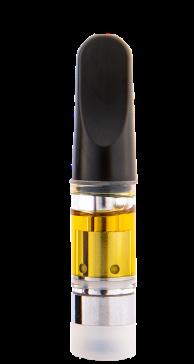




 BROOKLYN
BROOKLYN
Medical Cannabis Dispensary NEW PATIENTS 25% OFF WEEKLY PRODUCT SPECIALS DISCOUNTS FOR SENIORS & MORE
• HUDSON VALLEY • STATEN ISLAND Now selling whole flower! Please Consume Responsibly. Cannabis products should be kept out of the reach of children. We carry New York patient-favorite brands including: bestores.com @@be.stores.now be.stores • Find your location and menu here Medical Cannabis Dispensary ATLANTIC CITY NEW PATIENTS GET $100 CREDIT* EVERYDAY DISCOUNTS LOYALTY PROGRAM WEEKLY DEALS See website for more details mpxnj.com View menu here Please Consume Responsibly. Cannabis products should be kept out of the reach of children. We carry New Jersey patient-favorite brands including:
HIGHER GROUNDS HIGHER GROUNDS
HIGHER GROUNDS opened in 2017 as a coffee shop and CBD product apothecary, offering locally-produced CBD goods and lo cally-roasted coffees. Three years later, Owner Mark Barnett received their Maine Medical Caregivers license and added medical Can nabis to the coffee shop, opening their new medical dispensary on April 20, 2021.
Higher Grounds is located on 45 Wharf Street, a cob blestone road that doesn’t allow any vehicles in the Old Port and Art District area of Portland. A beautiful mural on the wall includes the logo of the business within the im age by a local artist, and the smell of freshly-ground coffee beans and tea fills the air.
At the front counter, Barista “K” welcomed me with a warm smile – inquiring if I might like a beverage, or whether I was more interested in their medical dispensary area. With the September issue of Northeast Leaf still fresh on my mind, I asked what she might rec ommend for some “Tannins and Terpenes.”
Barista “K” smiled as though she believed this was an easy question.
“You might try some Yunnan black tea or turmeric chia, or maybe a cup of americano or cappuccino, or maybe an iced latte?” she pro posed, gesturing to the beverage menu above the counter.


“As for the terpenes,” she continued, “we have infused CBD products up front, and a wide range of locally-grown and produced Cannabis products in the back dispensary area – if you have a medical card.” Point ing towards a refrigerator, she explained their selection of CBD-infused drinks and chocolate bars. “There are CBD oils, salves and other locally-produced CBD prod ucts … and nice choices of bagged coffees and teas beneath the counter.”
When it comes to the medical Cannabis products sold at Higher Grounds, they are top-notch examples of the small batch, craft ex pertise employed by the lo cal farmers. It’s these types of operations that bring jobs to the community, and prove that craft Cannabis has a market in Maine. This shop’s commitment to keep ing things local is furthered by Barnett serving as the executive chair of the Maine Craft Cannabis Association (MCCA), and his passionate advocacy for small businesses in general. The MCCA has even joined forces with other organizations – Legalize Maine, Compassionate Caregivers of Maine and Allied Small Maine Cannabis Businesses – to form a coalition working with counties and municipalities to promote common sense regulations for craft Cannabis in the state.
 The First Coffee and Cannabis Shop on the East Coast
The First Coffee and Cannabis Shop on the East Coast
“It’s these types of operations that bring jobs to the community, and prove that craft Cannabis has a market in Maine.”
20 ocT. 2022 shop review LEAFMAGAZINES.COM
HIGHER GROUNDS 45 Wharf St. Portland, ME highergrounds.me | @highergroundsme | (207) 536-7550 9AM-8PM Mon & Tues | 10AM-8PM Wed & Thurs 10AM-10PM Fri & Sat | 10AM-7PM Sun


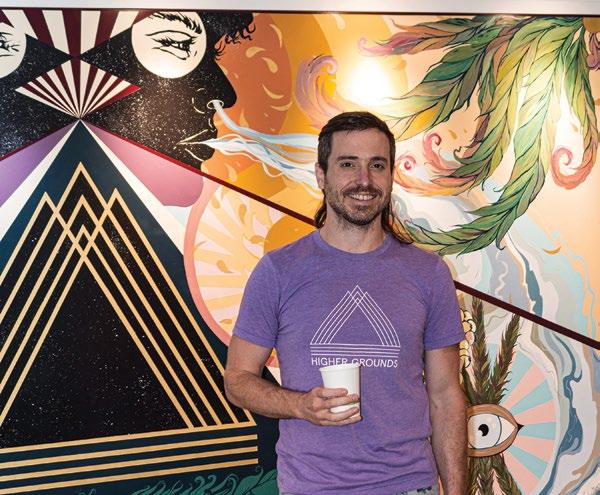

 Owner Mark Barnett
Owner Mark Barnett
REVIEW & PHOTOS by CHARLES TAGGART @KINDBUD.PHOTOS








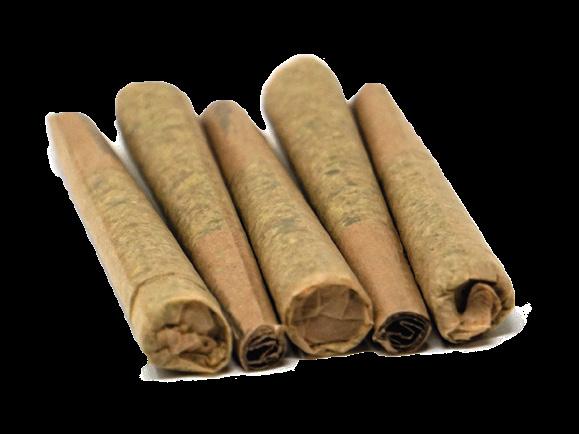
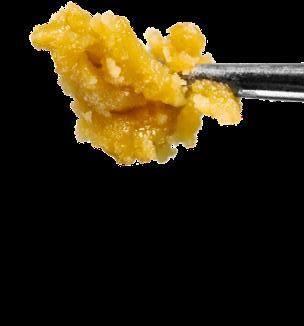




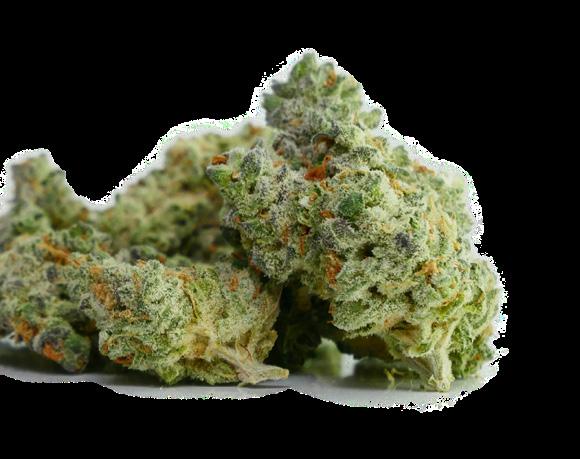

JOIN THE ORIGINAL GRASSROOTS CANNABIS ACTIVIST ORGANIZATION IN MASSACHUSETTS, 31 YEARS ON THE GROUND AND STILL GROWING TOGETHER! LEARN MORE AT MASSCANN.ORG RECREATIONAL & MEDICAL DISPENSARIES This product has not been analyzed or approved by the Food and Drug Administration (FDA). There is limited information on the side effects of using this product, and there may be associated health risks. Marijuana use during pregnancy and breast-feeding may pose potential harms. It is against the law to drive or operate machinery when under the influence of this product. KEEP THIS PRODUCT AWAY FROM CHILDREN. There may be health risks associated with consumption of this product. Marijuana can impair concentration, coordination, and judgment. The impairment effects of Edible Marijuana Products may be delayed by two hours or more. In case of accidental ingestion, contact poison control hotline 1-800-2221222 or 911. This product may be illegal outside of MA. Please Consume Responsibly For use only by adults 21 years of age or older. Keep out of the reach of children. Marijuana should not be used by women who are pregnant or breastfeeding. @mayflower.stores mayflowermass.com @mayflower.mass BOSTON (MED) LOWELL (REC) WORCESTER (REC) NOW OPEN IN LOWELL EVERYDAY LOW PRICES EVERYDAY BUNDLES EXCLUSIVE FLOWER

24 ocT. 2022 STRAIN OF THE MONTH Banana Guava Banana Guava CULTIVATED BY ART AND CRAFT CANNABIS
CANNABIS is supposed to taste good and after sampling a few strains grown by Art and Craft Cannabis, I chose to take home some of their delicious Banana Guava flowers. It’s a tasty sativa-dominant variety that’s enjoyable at any time of the day or night.
An organic farmer first and foremost, Owner Geoff Nosach has been growing organic garlic and hemp on his small farm for years – offering hemp CBD products created using a notill, hay-mulched and hand-harvested process, and is MOFGA certified (Maine’s USDA accredited organic certifier).
Geoff started offering medical Cannabis as a caregiver eight years ago and released his wholesale medical Cannabis four years later to local medical dispensaries in Central Maine.
You really can’t beat the smell and taste of organic, sungrown Cannabis flowers.


The Banana Guava buds provide a sweet banana aroma that’s reminiscent of hard candy, with a hint of citrus bringing a welcome surprise.
The sweetness will please patients that don’t care for the heavier gassy flavors that dominate much of the market.
The flavor reminded me of my grandmother’s banana pudding and I wouldn’t think twice about serving this up to the local older women’s book or tea club back in my small hometown. Not only did it taste good, I felt the medicinal benefits rather quickly. It relaxed my chronic lower back pain and the general stress of life seemed to lessen – giving me a nice creative flow during the day with just a few hits here and there.
The buds broke up nicely as I packed three glass bowls in a row and went for a hike around a local music festival I was attending – giving me a bit of extra energy and enjoyment while grooving to the beat of some live reggae.
If you know someone who’s new to Cannabis or maybe not into the gassy-diesel flavors, introduce them to Banana Guava sungrown flowers. For the more experienced high-tolerance types out there, it provides a heady and energy-rich buzz that’s great for sharing with friends. It’s what the Maine craft Cannabis industry is all about!

“THE SWEETNESS WILL PLEASE PATIENTS THAT DON’T CARE FOR THE HEAVIER GASSY FLAVORS THAT DOMINATE MUCH OF THE MARKET.”
REVIEW & PHOTO by CHARLES TAGGART @KINDBUD.PHOTOS for NORTHEAST LEAF
AND CRAFT CANNABIS
NORTHEAST
ART
ARTANDCRAFTCAN.COM @ARTANDCRAFT_CANNA 207-200-4710 21.6 % TOTAL THC 24.6% THCA 0.516 % CBGA 25.4 % TOTAL CANNABINOIDS
This product has not been analyzed or approved by the Food and Drug Administration (FDA). There is limited information on the side effects of using this product, and there may be associated health risks.



Marijuana use during pregnancy and breast-feeding may pose potential harms. It is against the law to drive or operate machinery when under the influence of this product.
KEEP THIS PRODUCT AWAY FROM CHILDREN.
There may be health risks associated with consumption of this product. Marijuana can impair concentration, coordination, and judgment. The impairment effects of edible marijuana may be delayed by two hours or more. In case of accidental ingestion, contact poison control hotline 1-800-222-122 or 9-1-1. This product may be illegal outside of MA.

euphoricenergizing relaxing relaxing relaxing relaxing sleepy potent effects and tast y terpenes find your flavor & feel
Please consume responsibly. For use only by adults 21 years of age or older or persons holding a patient registration card. Keep out of the reach of children. Marijuana should not be used by women who are pregnant or breastfeeding.



 beardedlorax stashleylynn maaryjwhite
All Things Cannabis For All People rickerdj
beardedlorax stashleylynn maaryjwhite
All Things Cannabis For All People rickerdj
leaflifepodcastPODCAST THANKS TO OUR SPONSORS #187 MMA AND CANNABIS #189 IT’S A WEIRD WORLD AFTER ALL #190 DITCHING BOOZE FOR BUDS WATCH ON LEAF LIFE PODCAST V2 LISTEN EVERYWHERE THIS MONTH: MARRIAGE & WEED 188# Marijuana products may be purchased or possessed only by persons 21 or older. This product has intoxicating effects and may be habit-forming. Marijuana can impair concentration, coordination and judgment. Do not operate a vehicle or machinery under the influence of this drug. There may be health risks associated with consumption of this product. For use only by adults 21 and older. Keep out of reach of children.
THE EVOLUTION OFSMOKETECH
We all know that humanity has been using Cannabis for thousands of years, but the ways in which we've consumed it have continued to change with the progression of time and technology. The Leaf’s resident cannthropologist Bobby Black lays out the various methods by which our forebears have imbibed the sweet smoke of our favorite herb throughout history.

THE BONG
THE PIPE
The earliest smoking pipes on record – discovered inside Egyptian tombs – were made of copper and dated from around 2000 B.C.E. Wooden pipes became popular during the Iron Age, followed by chalk and clay pipes in the 1600s, iron pipes in the 1700s and corn cob pipes in the 1800s – before glass became king in the late 20th century.

The tubular type of water pipe known as a bong (from the Thai word baung, meaning “cylindrical wooden tube”) has been around almost as long as civilization itself. The oldest bong ever was discovered in Russia in 2013 –made of solid gold and dating back around 2,400 years to the Scythian tribes of Eurasia. Other ancient bongs found in Ethiopia have been carbon dated to around 1300 C.E. Bongs were apparently popular in China during the Ming Dynasty, then spread to the West via the Silk Road around the 17th century.
THE HOOKAH THE CHILLUM
A kind of hybrid water pipe/vaporizer with a long hose mouthpiece, the hookah originated in the northwestern prov inces of India, along the border of Pakistan and Afghanistan, around a millennia ago. Originally fash ioned from a coconut shell base and tube, they use hot coals to heat dried herbs from below.


The chillum is a form of simple conical pipe originally made out of either clay or cow and bull horns. A small stone is often placed inside the stem in place of a screen to keep from inhaling the material to be burned. The chillum – or “holy pipe” as it is known by Indian Sadhus who’ve used it in their rituals for centuries – originated in Asia but eventually made its way to Africa, then to Jamaica in the 1930s, where the Rastafarians also adopted it into their spiritual practices.

28 the tech issue
THE JOINT/SPLIFF/BLUNT


First invented in Alcoy, Spain during the 1500s, rolling papers quickly spread to France, then throughout the rest of the modern world in the centuries that followed – eventually becoming the most common method of smoking weed in America during the 20th century. (For the whole history of rolling papers, check out the Cannthropology column in our Oct. 2021 issue).
Blunts – or Cannabis rolled in tobacco leaves – take their name from the Phillies Blunt brand of cigars, typically used to roll them. It is believed that the blunt originated in the Caribbean during the 19th century when workers from India first brought “ganja” (the Hindi term for flower) to Jamaica, where tobacco was cheap and available. Then during the late 1980s, a large number of Caribbean immigrants moved to New York City – where hip-hop music and culture were just beginning to take off – which quickly popularized the practice.
GLASS
Long ago, enterprising stoners figured out that makeshift pipes and bongs could easily be jerry-rigged, or “MacGyvered,” out of various household items. The most common of these self-built smokeware apparatuses were made from fruit (particularly apples) and small beverage bottles – most notably old Sobe bottles –which had a thinner layer of glass at the bottom that could easily be punctured to insert a bowl.
THE GRAVITY BONG
THE DAB RIG/ TORCH / NAIL / BANGER
BOB SNODGRASS

Though glass blowing itself dates back to around 3000 BCE, the first pipes made of glass wouldn’t emerge until the Victorian Era – but it wasn’t until the invention of the much tougher borosilicate glass in the late 19th century that the idea began to catch on. Though glass pipes and bongs first became popular for Cannabis use in the 1960s, it was “Godfather of Glass” Bob Snodgrass who elevated the artform and brought them into the mainstream with the “heady” colorchanging pieces he sold on Dead tours throughout the 1980s.
THE VAPORIZER
What distinguishes vaporizers from other smokeware devices is that they use indirect heat rather than fire or combustion to heat the Cannabis. Believe it or not, a form of vaping Cannabis actually dates back to the 5th century B.C. – as evidenced by Greek scribe Herodotus, who wrote about Egyptians heating hemp seeds with stones and inhaling the vapors. “Eagle Bill” Amato, known as the “Father of Vapor,” introduced the first modern vaporizer (powered with a heat gun) at the Amsterdam Cannabis Cup in 1993. Six years later, German company Storz & Bickel released a desktop electric vaporizer called the Volcano that set the new standard for decades to come. Eventually, much smaller vaporizers the size and shape of a pen were developed.



The concept behind the gravity bong is to use air pressure rather than one’s lung power to draw the smoke out of a joint or bowl, then forcefully push that smoke down one’s throat. Originating as MacGyverisms (typically made out of two or three-liter plastic soda bottles), gravity bongs were eventually professionally designed and manufactured – most notably by Grav Labs and Stundenglass.


When BHO started becoming popular in the late 2000s/ early 2010s, a new way was devised to smoke them. A “nail” made of titanium or quartz (or later, ceramic) was placed in the stem of a bong instead of a bowl and heated with a handheld blowtorch, after which a “dab” of concentrate was smeared onto it, then typically covered with a glass/quartz “dome” or “globe” to capture the smoke and prevent burns. This dome-andnail setup was eventually replaced by the honey-hole/ banger most commonly used today.
THE VAPE PEN

CARTRIDGE
Though the first “Smokeless Non-Tobacco Cigarette” featuring a “cartridge” was patented in the 1960s, it was really the “Cig-a-Like” in 2003 (invented by Chinese pharmacist Hon Lik) that would serve as the prototype for the modern vape pen. Coincidentally, the flood of new e-cigs entering the market in the late 2000s perfectly synchronized with the spike in popularity of honey/hash oil, eventually establishing the vape cartridge as one of the most popular ways to consume Cannabis concentrates.
In the 2010s, building on the popularity of dab rigs and vape pens, some enterprising entrepreneurs began developing combinations of the two. First came the e-nail – a plug-in nail heated with electricity rather than a torch, enabling better distribution of heat and temperature control. But it was the invention of the first fully electronic rig, the Puffco Peak, in 2018 that truly changed the game forever (see our interview on page 34 of this edition). Today, there are several e-rigs on the market (including the iSpire, Bello and Carta) — all of which enable one to enjoy high quality, torch-free dabs just about anywhere.


THE E-RIG THE FUTURE
What far-out gadgets might the stoners of the future use to get high? Will it be solar-powered pipes? Microwave vapes, maybe? Laser rigs, or even nuclear bongs? Honestly, we have no idea … what we do know is that the boundless imagination and ingenuity of Cannabis users will continue to drive innovations in smokeware and other technologies for decades to come.
STORY by BOBBY BLACK @BOBBYBLACK420/LEAF NATION | ILLUSTRATIONS by DREW BARDANA @DREWBARDANA
/
DO-IT-YOURSELFERS
TECH ROUNDUP
Leaf Nation puts some of the Cannabis industry’s hottest products to the test
BEED ROLLING MACHINE PUFFCO PROXY
 REVIEW BY MATT JACKSON @ACTIONMATTJACKSON
REVIEW BY MATT JACKSON @ACTIONMATTJACKSON
Meet the “Nespresso of Cannabis.” These countertop machines launched in 2022 are capable of automatically filling an empty cone with prepackaged half-gram pods of ground Cannabis, delivering a pre-roll to your waiting hand in around 20 seconds. For anyone who has mobility issues in their hands or just doesn’t know how to roll, Beed offers easy access and consisten cy. There are five strain-specific varieties available, and all of the pods are recyclable. With this amazing new device, consumption bars can offer people a simple way to roll up some weed – similar to the way self-pouring technology has revolutionized the bar experience. beed.co @beed_co

LEVO C OIL DIFFUSER
REVIEW BY KATHERINE WOLF @KATADELLIC
Budding (pun intended) home canna-chefs can use the LĒVO C to infuse large batches of oil, butter, honey, milk and more. Available in multiple colors, it’s cuter than your favorite countertop coffee maker (and just about as easy to use). The LĒVO C is one of the simplest diffusers to set up and features an ultra-sleek, touch-activated interface with precise time and temperature controls. The best part? All the removable pieces are dishwasher-safe for a painless cleanup process – because having to clean a machine by hand after eating a bunch of edibles sounds like just about the worst thing ever. levooil.com @levo_oil

 REVIEW BY MATT JACKSON @ACTIONMATTJACKSON
REVIEW BY MATT JACKSON @ACTIONMATTJACKSON
The breakout hit of 2022 is an electronic hash pipe that makes smoking concentrates as in stinctive as humanly possible – bringing versatility as its greatest superpower. With a flick of the wrist, you can drop this miniature marvel into an endless array of pipe or bubbler attach ments, glass bangers, and even a disco ball. Proxy offers tasty hits, all in a package that’s dis creet yet instantly identifiable. Like the basic Peak model, this has four variable heat settings (505°F -560°F) and haptic feedback, but makes use of the same 3D chamber as the upgraded Peak Pro. New accessories include the travel pack and flower-smoking attachments. puffco.com @puffco
ARDENT FX
REVIEW BY KATHERINE WOLF @KATADELLIC Dubbed the “Easy Bake Oven” for edibles, it really has never been easier to get baked off some baked goods with the Ardent FX. Equipped with precision heaters and timed cycles, this thing can activate and infuse up to one ounce of flower or concentrate at a time. Perhaps its most valuable feature, the Ardent FX optimizes terpene retention and cannabinoid ac tivation with custom settings for decarbing CBD and THC/CBG. But that’s not all, folks! Shift this cutting-edge culinary ganja gadget into “bake” mode to actually bake your infused goodies all within the same device. Yeah, technology is crazy these days. ardentcannabis.com @ardentllc
30 ocT. 2022 the tech issue LEAFMAGAZINES.COM
HITOKI TRIDENT
REVIEW BY MATT JACKSON @ACTIONMATTJACKSON
Be honest, who doesn’t want to see their weed lit up by a laser beam? Every time you activate the Trident, a beam of light ignites your ground-up weed from behind a tinted, vision-safe chamber. This feels like you’re using something from a Sharper Image catalog. There are three temperature settings and even though the Trident is a combus tion device, it does leave you with a pile of spent herb. Trident has a silicon mouthpiece or hookah-style hose that’s perfect for passing around, if you can manage to look away from its hypnotic light long enough. hitoki.com @hitokilaser

TERPOMETER
 REVIEW BY MATT JACKSON @ACTIONMATTJACKSON
REVIEW BY MATT JACKSON @ACTIONMATTJACKSON
Now timing the perfect dab is as easy as opening the automatic garage door. This handy, keychain device contains a heat sensor that measures the tempera ture of whatever surface you hold it a half inch from, displaying it on a small LCD screen. When it registers between 500°F-550°F, the screen turns green to let you know it’s time to dab. Thermometer IR produces accurate results, switches eas ily from Fahrenheit to Celsius, has a screw-on dab tool attachment, and you can even set it to buzz at you when you’ve hit the part of its range that you prefer. No more timers, or trying to line up a troublesome laser beam to get results. theterpometer.com @theterpometer
GORDO SCIENTIFIC RIPTIP
 REVIEW BY KATHERINE WOLF @KATADELLIC
REVIEW BY KATHERINE WOLF @KATADELLIC
It’s 2022, people – wasteful paper filters that hit harshly are old news. It’s time to take your rolling game into the future with the Rip Tip. These reusable tips made of high-quality borosili cate glass are hand-blown by Gordo Scientific in Denver. Crafted to create a smoother and more sustainable sesh, the signature riptide channels that optimize airflow are where the “Rip” Tip gets its name. Aptly named indeed, these things sure do rip. Available in various diameters, the nine millimeter is the OG size and most popular. As a general rule of thumb, a seven to eight millimeter is ideal for personal pearls under a gram, while anything over 10 millimeters should be reserved for a trip to Mars. gordosci.com @gordoscientific
REVIEWS by LEAF NATION STAFF & CONTRIBUTORS | PHOTOS by DANIEL BERMAN @BERMANPHOTOS 31
TECH ROUNDUP
the Cannabis industry’s hottest products put to the test

710 LABS

TERP COOLER
 REVIEW BY MATT JACKSON @ACTIONMATTJACKSON
REVIEW BY MATT JACKSON @ACTIONMATTJACKSON
Preserving terps is a full-time job. That’s why concentrate conservationists 710 Labs created a travel-friendly way of keeping hash and rosin at the perfect temperature. With an average battery life of eight hours, this lunchbox-shaped cooler holds around five standard-sized jars comfortably. The device works like a soda can fridge, cooling down the metal plate inside to bring the contents to your preferred settings. The carrying case is netted in all the right spots to allow proper ventilation and includes chargers for the home, car and USB. This little droid is the perfect option for road trips, hotel stas and consumption events. 710labs.com @710labs
FOCUS V CARTA 2
REVIEW BY MATT JACKSON @ACTIONMATTJACKSON
Focus V has revamped its popular e-rig device to create an experience that absolutely rips. With a solid, professional feel, the Carta 2 fea tures an OLED screen that gives you up-to-the-minute temp readings, a session timer, and lighting custom ization that can be controlled with either the three buttons on the unit or an accompanying app. The improved glass chamber holds an impressive amount of water as well as smoke, and the battery ran about 25-30 dabs on a full charge.
With a temperature range of 365°F-635°F that’s adjustable to a single degree, Carta 2 captures the flavor from lower temp dabs while delivering the clouds we all crave. focusv.com @focus.v

ALCHEMY JARS
REVIEW BY NATE WILLIAMS @NATEW415
The next level of hash storage is here. Alchemy Jars was founded by glassblower Patrick Lee, better known as @purpskurp710 on Instagram. Sick of dried out, crumbly jars of rosin, Lee decided to solve the problem himself and drew from existing tech to create a solution and offer it to the masses. Alchemy Jars utilize double-walled, vacuum-sealing technology and work the same way high-end water bottles do to insulate and protect their contents from the environment surrounding the container. The jars work great and function as advertised, keeping your rosin fresh and full of terps – just how it was meant to be. alchemyjars.com @alchemyjars

CONTINUED FROM PREVIOUS PAGE
32 ocT. 2022 the tech issue LEAFMAGAZINES.COM
G PEN HYER
REVIEW BY MATT JACKSON @ACTIONMATTJACKSON
Turn your bongs and bubblers into lung-busting dab machines with the newest product from G Pen. Improving upon the success of the Connect, Hyer contains seven times the battery power with a 1,500mAh rechargeable battery, five session settings, and five variable heat settings ranging from 407°F-803°F. Hyer is a tethered-style unit, connecting the battery and concentrate tank with a magnetic cable. Most of the pieces on the Hyer are magnetic and the included dab tool even screws into the cap – making it easy to keep together when not in the included hemp carrying case. Hyer performs well on all concentrates, but exceptionally well with resins and shatters. gethyer.com @letsgethyer


ZENCO FLOW
REVIEW BY WES ABNEY @BEARDEDLORAX
Raise a glass of vapor and embrace the most social innovation to Cannabis tech since passing a joint. The Zenco puts concentrates “on tap” by using an inno vative function that turns a normal vape cartridge hit into a classy and tantalizing experience of drinking your vapor. Simply press down on the glass and watch the vapor swirl inside with tasty terps and cannabinoids, wait until full, and then sip by breathing in through the straw or the glass (to get huge hits). Shareable without having to swap spit from somebody’s pocket dab pen, the glasses are easily washed and available in sets for entertaining. Perfect for socializing and micro or macro tokes, the Zenco is the ideal tabletop unit to transform your cartridge experience – and can easily be packed onthe-go for your next sesh! thezenco.com @thezencolife


ISPIRE DAAB
REVIEW BY MATT JACKSON @ACTIONMATTJACKSON
The newest device from Ispire does away with ceramic heating elements and instead opts for a more natural, induction heating. The unit looks like the Dewalt of dabs, fitting in your hand as easily as a drill. Load your concen trate into a small glass bucket and a metal ring encased therein is heated up within the glass chamber, bringing it up to temperature and vaporizing your concentrate in a way that feels closer to a traditional dab. A sturdy desktop piece, the daab adjusts in five-degree increments from 410°F-805°F, comes with its own hardshell case for traveling, and is able to go around 29 dabs on a full charge. getispire.com @getispire
DABX MARK.1
TERPHOGZ EDITION
REVIEW BY MATT JACKSON @ACTIONMATTJACKSON
Perhaps the most natural feeling of all the bong-into-rig attachments. Sliding into your home glass pieces, DabX is a titanium device with some interesting differences. A double-click begins the warming of the unit before triggering a 12-second heat burst, according to four different temperature curves. The device doesn’t go above 470°F, so it’s less about heat and more about the device you’re going to fill. There’s a carb button, making the included cap just for travel. Instead of trapping in the smoke with a cap, the heat source in the chamber draws the concentrate down into the center, which means no more swabbing between hits. dabx.com @dabxusa

THE FLOWER MILL
REVIEW BY NATE WILLIAMS @NATEW415
The Flower Mill is not a grinder. Rather, it achieves its function by utilizing an entirely different mechanism – milling. By definition, to grind is to reduce something to small particles by crushing it. On the other hand, to mill is to cut or shape into pieces. The bottom line is this: Your flower is going to be in much exponentially better condition after being milled versus being ground. After a thorough test run and side-by-side comparison, there is no doubt the grinders are going on the shelf and the mill will stay … ahem … in rotation. flowermillusa.com @flowermillusa
by
NATION STAFF
by DANIEL BERMAN
COURTESY ISPIRE
REVIEWS
LEAF
& CONTRIBUTORS | PHOTOS
@BERMANPHOTOS
33
THE PEAK OF SUCCESS
A profile of Puffco founder & CEO Roger Volodarsky
IT’S A MONDAY MORNING IN DOWNTOWN L.A., and the offices of Puffco are unusually quiet. Of the company’s nearly 130 employees, barely a dozen are here … among them, the company’s Founder and CEO, Roger Volodarsky – aka the Steve Jobs of Cannabis.

It’s not hard to see why he’s earned such a moniker. Jobs started Apple in his parents’ garage, while Volodarsky started Puffco in his mother’s basement. Like Jobs, he frequently dresses in basic black attire. But the most significant similarity between the two tech moguls is undoubtedly the sleek style of their creations and how profoundly they impact the lives of their users. It’s fair to say that what the iPhone did for mobile phones, the Puffco Peak has done for Cannabis consumption.
In front of our lens, Roger appears guarded, even stiff … but off camera, his stoic demeanor softens to reveal the passion and generosity of spirit that his friends know all too well.
STORY by BOBBY BLACK @BOBBYBLACK420/LEAF NATION
PHOTOS by JUSTIN STEWART @JUSTNLSTEWART
34 ocT. 2022 LEAFMAGAZINES.COM the tech issue
A FATEFUL MILESTONE
In his young adulthood, Volodarsky pursued a “normal life” – working several different jobs, none of which provided the sense of fulfillment he was craving.
“I was a serial entrepreneur,” he explains. “I was in the mortgage space, I’ve worked for a translation service, I’ve worked as a systems administrator … I’ve done a bunch of different things, but I never worked on something that I was really passionate about.”
Then in 2012, at the age of 30, he reached a turning point.
“When you’re a kid, you have all these ideas of what you’re going to be when you’re 30. But al most everyone I know ended up not being what they thought they would be. The world millen nials were promised – ‘If you work really hard, you’ll get these things’ – that wasn’t happen ing for our generation. And so I hit this really frustrating point, and I was using Cannabis to cope.”
It was at this point that a friend turned him on to the enticing new world of wax (as BHO was called at the time) and vape pens.
“I was completely liberat ed,” Volodarsky says. “I was able to walk around the city and consume, and I felt truly invisible. I became obsessed with it.”
Noticing his passion for the new “dab pen” phenomenon – and knowing he despised his systems administrator job – Volodarsky’s friend encour aged him to try getting into the vape industry.
“I had to make a decision: either work a job that I hate to provide me with the lifestyle I want, or pursue what I love. And I decided, ‘you know what? Fuck it – why don’t I start doing this?’”
Volodarsky began re searching wax pens online and learning everything he could about them – mainly, how they were made and who was selling them. He made recon trips to smoke shops in Atlantic City and Haight Ashbury to see what vapes were available and quickly realized that none of them were very good.
“All the wax vapes at the time were just repurposing e-cigarette technolo gy,” he explains. “They were really shitty products. And so, not knowing where to begin, my only goal was just, ‘I want to make something better than this.’”
THE BIRTH OF PUFFCO
After toying around with various ideas, he decided on the name “Puffco,” purchased the URL in January of 2013, and incorporated in March. And just like that, he was in the vape business.
“Puffco was my first investment in myself,” says Volodarsky. “I thought, if it leads nowhere, that’s okay – because I’ll enjoy every second that I work on this.”
After tinkering with various components and prototypes, the company released its first product, the Puffco Classic, in January 2014. Though he found it preferable to other pens on the market, Volodarsky was not satisfied. So after selling off the first batch, he went back to the draw ing board with the goal of accomplishing three key improvements: a higher capacity atomizer, variable temperature control, and removal of glues and fibers from the air path. Those three pillars inspired his next iteration, the Puffco Pro. By replacing the fibers typically used to soak up the oil with porous ceramic, the Pro sig nificantly improved the flavor and healthiness of vaping concentrates.
HIGH TIMES AND LOW TIMES
The Pro was released in October 2014 … just as High Times was about to conduct its annual vape pen review. Learning of this, Roger showed up at their offices at the last minute with a box of samples. Though Puffco was unknown at the time, the Pro ended up tak ing first place for Best Vapor Pen. That award changed everything for Puffco – both for better and for worse.


“After the review was a very bittersweet period,” Volodarsky recalls. “That threw us into the spotlight and got us a ton of fans and revenue coming in, but it also forced us to make much more product than we were before.”
Unfortunately, consumers weren’t the only ones who took notice of their improved design; within a few months after the review was pub lished, copycat devices began appearing on the market.

“I took it very personally. I had obsessed over this vape pen for two years, and now this thing that I’d worked so hard on – the greatest thing I might ever do – was being bastard ized by shittier brands. I didn’t know what to do – I felt completely defeated.”
To make matters worse, in addition to having their intellectual property poached, Puffco’s supply chain unexpectedly collapsed at the end of 2014. Volodarsky had to act quickly, or everything he’d been working towards might be lost.
In early 2015, he and his head of operations headed to China, where they spent over a month establishing new relationships and exhausted most of the revenue they’d earned rebuilding their supply chain. Once they had partnerships in place with new manufacturers, they went straight into pro duction on their next models: the Puffco Plus (the first truly coil-less vape pen on the market) and the Puffco Pro 2, both of which sold exceptionally well. But still, Roger was unsatisfied.
“We came out with the Pro 2, and I hated it,” he grumbles. “It got decent reviews, and made the company millions of dollars … but I was making products for the sake of the sale, not trying to innovate. And that threw me into one of the biggest depressions of my life.”
So in 2016, when Puffco’s head engineer Avi asked him what he wanted to work on next, Roger laid out his vision for their most ambitious project yet.
 Puffco products line the entrance of their LA headquarters.
The Puffco Cupsy
The Puffco Proxy
The Puffco Classic
Puffco products line the entrance of their LA headquarters.
The Puffco Cupsy
The Puffco Proxy
The Puffco Classic
“I had to make a decision: either work a job that I hate to provide me with the lifestyle I want, or pursue what I love.
And I decided, ‘you know what? Fuck it – why don’t I start doing this?’”
COURTESY
CONTINUES NEXT PAGE >>
PUFFCO
THE PEAK OF SUCCESS
PEAK PERFORMANCE
“I wanted to do something totally new,” he explains. “I was like, I want to make a device that makes dabbing flawless and gives you the perfect dab every time.”
Volodarsky had a checklist of criteria he wanted this new device to meet: It should let you know when the dab is ready. To avoid the associated stigma, there couldn’t be any torching involved. It should be shaped like a beer bottle and fit into a cup holder. And it should have a removable glass attachment so that artists could make custom pieces for it.
“One of the biggest parts of the hash and dab scene is glass,” explains Volodarsky. “We’re not here to compete with glass artists – we’re here to work with them. We want them to see us as a platform to express their creativity.”
After months of development, Roger, Avi and their team had invented the first fully-electronic handheld “smart rig,” the Puffco Peak – a groundbreaking dab de vice featuring four heat settings, an LED light band, haptic feedback and automat ic temperature calibration.
Volodarsky had so much confidence in the Peak that just as it was set to launch in early 2018, he made the risky decision to move the entire company to Los Angeles.
“We put everything on the line,” Volo darsky admits. “When we moved [to L.A.], we had one payroll period and two months of rent left in our bank account. We just knew that once people saw the Peak, everybody was going to want it.”
His gamble paid off: The Peak became an instant sensation, revo lutionizing concentrate consumption and generating millions in sales. But like many innovations, it still had bugs that needed working out. Com plaints of defective devices and atomizer connectivity issues became common—but Puffco addressed these problems through tech support, and repairing and replacing parts. Their redesigned Peak Pro, re leased two years later, fixed its predeces sor’s shortcomings while adding several
new features, including multicolor lighting options, real-time temperature controls, usage statistics and more – all controlla ble via their new smartphone app. This new “flagship device” also offered a slew of new attachments and accessories.
RECENT INNOVATIONS
After the enormous success of the Peak Pro, Puffco began branching out with two new products designed for flower: a wa ter bottle bong called the Budsy in 2021, followed by a coffee cup bong called the Cupsy in 2022. While both are fun and functional devices, it was Puffco’s next innovation – the Proxy – that would once again redefine the dab game.

What makes Proxy unique is that the atomizer chamber is a separate, free standing device – independent of any paraphernalia. Though sold with the out er casing of a classic pipe, this modular vaporizer can be inserted into any kind of smoking apparatus with an appropriately sized hole to house it – making it a per fect vehicle for glass artists’ creativity.
“We’re big fans of the glass scene,” says Volodarsky. “Hash and glass have grown together over the past decade, and we want to honor that space by con tinuing to invest in it.”
FAMILY & FULFILLMENT
Roger Volodarsky’s road to riches has un doubtedly been a rough one. Once ostracized by his family for his love of Cannabis, he’s since forged himself a new fam ily at Puffco.
“Chelsea, my first em ployee who I’ve been a mentor to … Kevin, who was my friend before he joined the company, and who’s always good for a laugh … Avi, our chief technology officer … I’m very lucky to have some of the peo ple that most enrich my life here with me in this business,” Volodarsky beams. “We all feel like our work is meaningful because we’re working on things that make our own lives better every day. To live every day doing what you love and having people love you for it … I can’t imagine anything better than this.”
 Puffco founder & CEO Roger Volodarsky
Puffco founder & CEO Roger Volodarsky
“We’re big fans of the glass scene,” says Volodarsky.
“Hash and glass have grown together over the past decade, and we want to honor that space by continuing to invest in it.”
36 ocT. 2022 the tech issue LEAFMAGAZINES.COM CONTINUED FROM PREVIOUS PAGE
inside puffcon
STORY BY MATT JACKSON @ACTIONMATTJACKSON
WHAT DO YOU GET when you gather thousands of people in the middle of downtown Los Angeles to look at art, smoke hash and listen to music? If you’re Roger Volodarsky and the team at Puffco, it’s a warm feeling of accomplishment. Part Truman Show, part festival experience – Puffcon is a thoughtfully writ ten love letter from a brand to its fans. And all you need to get in is one of their flagship products registered in your name.


Everyone you see walking around at Puffcon is a member of the concentrate smoking scene. Built with more of a block party vibe than a day festival, Puffcon combines the team’s favorite parts of the culture that uses their products, bringing together as many of them as possible to create a physical representation of their expansive community. Like Disneyland, the brand carefully curates everything you see at Puffcon – creating its very own wonderland in the middle of DTLA, made up of various themed areas.
The Lot is their tribute to Shakedown Street. Where a Dead Lot meets Complexcon, this space is a veritable wook-mart filled with some of their favorite artists and makers. Since Puffcon creates this event as a giveback, they also collect zero fees from the vendors. This results in artists being encouraged to go hard, bringing limited-edition products you’ll only find at the event.
At the Food Court, Puffco features some of their favorite food vendors including mouth-watering options from MANEAT INGPLANT, Bootleg Pizza, and even World Famous Hot Boyz chicken sandwiches (who sped up the creation of their mobile truck to join the party in 2021).
The two most prominent brands, Alien Labs and Talking Terps, create activations – adding The Lab and Terp Cottage areas to the map. There’s also The Art Gallery, Mainstage, Lounge Areas and the Puffco Store, where along with special merch, you’ll also find limited preview drops of gear and discounted products.
Puffco also employs several artists and musicians to create live performances offstage. Marching bands, DJs, double-dutch pros, caricature artists, and even fake police issuing tickets for smoking cheap hash – all paid for and put on by Puffco to complete that block party feel. Events Director Kevin Chapman told us, “We want it to feel like a true block party … like almost anything could happen.”
After the sun goes down, Puffcon lights up the main stage where they book musical guests to cap off the night with explosive performances. In their first year, Action Bronson and Flatbush Zombies kept the crowd smoking. Year two upped the ante with Schoolboy Q and Eshu Tune (the musical stage name of comedian Hannibal Buress) on the bill.
Puffcon is a party for people who love smoking concentrates as much as they love the culture, art, music and craft that sur rounds it. As Chapman said about organizing this kind of party, it’s “literally getting to give back to a group of people I consider myself a part of.”
“Puffcon is a thoughtfully written love letter from a brand to its fans.”
STORY by BOBBY BLACK @BOBBYBLACK420/LEAF NATION | PHOTO by JUSTIN STEWART @JUSTNLSTEWART
PUFFCO.COM @PUFFCO
Building a

JAIR VELLEMAN DUTCH LIGHTING INNOVATIONS
SITTING AT THE LONG DINING TABLE in his flat overlooking the canals of his hometown of Amsterdam, Jair Velleman leans in and smiles through his thick beard, exuding equal parts intensity and joviality. “Let me ask you something,” he says. “Do you like war?

I love war.” It was my first conversation with Velleman, and it was a moment that speaks volumes about this magnanimous, mercurial mammoth of a man. He wasn’t talking about bombs, armies and military actions.
He was talking about the business battleground. That moment kept replaying in my head during subsequent conversations over the months following that first meeting. Velleman and his former company, Gavita, revolutionized the grow light industry before he sold it for a “never have to work again” sum more than half a decade ago. Now, like a retired general returning to the war room, he’s coming back to the world that he helped build – this time at the helm of his new lighting company, Dutch Lighting Innovations.
38 ocT. 2022 the tech issue LEAFMAGAZINES.COM
Better Bulb
SPROUTING
Growing up in a progressive Amsterdam family, Velleman was introduced to Cannabis at an early age. At around 12 years old, he went to a nature camp that he says was “kind of a hippie thing” – where he ended up having his first experience with the plant.
“Somebody was smoking joints in a tent, and we hotboxed the tent,” he said. “I ended up laughing for hours from a very stupid joke. Slowly, through the years, I started smoking more. I’m a very hyperactive guy, so it kind of put me more on a level where I could communicate with people around me, and I kind of enjoyed that.”
When he was 16, he spent his days hang ing at a local coffee shop called Picasso.
“The owner said, ‘Dude, do you have a basement?’ I said, ‘I live with my mother, but yes, we have a big basement,’” Velleman recalled. “Pretty much I talked my mother into starting a grow … We had four 1000-watt lights, and a sea of green of 300 plants. That was my first grow. And after that, I just kept growing.”
SWITCHED ON
After a number of years cultivating, a lightbulb moment hit Velleman. He decided to form a company to manufac ture double-ended HPS lights and market them to the burgeoning indoor and greenhouse cultivation market in the U.S.
I was just really excited - because I used to be a Cannabis grower - to bring this crazy, new technolo gy to Cannabis growers,” he said. “I love ‘The Blues Brothers.’ It’s a beautiful movie. I always use the quote, ‘I am on a mission from God.’ And my mission was to make sure that growers go from one-and-ahalf pounds per light, to three pounds per light, or four pounds per light. Because that was what Gavita did. We gave people three pounds per light. That was a big thing in the beginning.”

Velleman sold Gavita more than five years ago and spent the ensuing time building a family, garnering awards for his advocacy and focusing on his passions – such as collecting items for his World of Cannabis Museum. But now he’s on the path to build upon
his prior successes and experience, creating what he hopes will be the world’s leading quality manufacturer of Cannabis grow light technology.

HERO’S QUEST
When he talks about the new endeavor, Velleman can hardly contain his excitement.
“The last time, we ended up with the biggest horticultural lighting company in the world before we sold, so from where I stand, that’s about the top of the pinnacle,” he said. “I kind of enjoy going back to the underdog posi tion. Then I have to fight the big guys, instead of being the big guys, and everybody attacking you.”
With DLI, Velleman wants to create the best possible lights, and manufac ture them 100% at his facility in Hol land. It’s all about total quality control.


“I’m a grower by heart,” he said. “I love growers. And I want to get the best product possible to them. I did it with Gavita, and we’re now gon na do it with DLI, with a no-bullshit approach. I don’t care if my prod uct is slightly more expensive than everybody else’s. That might be true. I’m not aiming to be the cheapest on the market. You either have to be the cheapest or the best. So we made the decision to be the best.”
At the core of his philosophy is the goal of making every light sold with the DLI label at the same level of quality as what industry manufacturers call a “hero light.”

“It’s one light that’s built to top specifications,” he said. “That’s the one that you will test in the labo ratory, and it’s the one you will take the specs from, that you will put on your flyers and on your website. Nobody’s checking what comes afterward. The trick of putting a good product out to market is that every light you build needs to be a hero light.”
As with everything else he’s been involved in, he plans to be hands-on at DLI. It’s the only way to en sure the company will match his intentions.
“I’m the tip of the spear,” he said. “I’m the warlord. I go out. A lot of CEOs sit behind their desks. Owners
of companies sit behind their desks. I don’t sit behind my desk. I will travel, come out, meet my customers. And because I meet my customers and actually talk with them, I understand what their wishes are and what they actually want – and we can use that for creating new products for horticulture and for Canna bis growing.”
BRIGHT FUTURE
DLI manufactures LED and more traditional HPS lighting, and is currently working on spectrum tests and other research to try to push plants to their limits. Velleman and his team will be collaborating with Wageningen University & Research, a university in Holland, to gather and interpret data, and develop new technology.
“LED is where the future is at right now,” he said. “I think the biggest thing right now with LED is going to be developing a more wide-based spectrum that can actually enhance things like terpenes – because the future is going to be in terpenes. You don’t buy good wine because it’s one percent more alcohol than the other wine next to it – you pay $100 for a bottle of wine not on the alcohol percentage, but on the god damn terpenes. The future is not going to be THC, it’s going to be terpenes.”
One of the product lines Velleman is most excited about isn’t LED, rather, it’s the non-LED UV lighting DLI has developed for use in concert with a wide-spectrum LED setup. He plans to unveil it with a DLI launch in November at MJBizCon in Las Vegas.
“The plant protects itself against UV by doing certain things, like making trichomes,” Velleman said. “That’s what we want. We want those trichomes and those terpenes. The plant reacts to UV, and that plant reac tion is exactly what we want. That will create a better product that’s better tasting.”
As much as Velleman is thrilled about the tech, that’s not the main thing that’s drawn him back to the battlefield.
“I love the Cannabis community,” he said. “That’s why I’m coming back. I could sit on a tropical island and sip cocktails until the day I die, and I don’t want to do that. My best friends are in this community, and my best friends are all over the world. The moment I stop working, I don’t see my friends anymore. So I have no choice. … I love hanging out with all those amazing people that I will tell my grandchildren about.”
“I’m a grower by heart,” said Velleman. “I love growers. And I want to get the best product possible to them.”
STORY by TOM BOWERS @CANNABOMBTOM/LEAF NATION | PHOTOS by PYRON HEIJMINK
DUTCHLIGHTINGINNOVATIONS.COM @DUTCH_LIGHTING_INNOVATIONS
Gas Truffle Hash Rosin
SOLAR CANNABIS CO. continues to pull out all of the stops when it comes to assuring that their customers receive a supremely quality product. Leveling up once again, they recently acquired a brand new stainless-steel extraction unit from Ice Extract Equipment that can run up to 800 pounds of material washed with ice and water at one time.

Needless to say, the team over at Solar have had their hands full this past month – pressing their own single-source live rosins that just hit the recreation al market in Massachusetts.
For any local dispensary, creating quality concen trates should be a priority – but the efforts and end product are up to the company. Solar is exception al in the fact that they’re able to pheno hunt and select multiple phenotypes of rare genetics that are expertly cultivated and chosen particularly for resin farming. I had the opportunity to get my hands on a half gram of their newly released Gas Truffle hash rosin – a cross of Malibu Mirage and Grape Gasoline conceived by Compound Genetics –which tested at over 82% total active cannabinoids and 56.7% THCa.
Solar’s concentrate is packaged in exquisite fash ion – with an eye-catching box and jar containing the indica-dominant Gas Truffle and its grape, yet

distinctly gassy and almost creamy terpene profile. The color of this rosin is a little bit amber, but this could be due to a slight aging of their first run of material. Gas Truffle’s fragrance smashes the nose with notes of an earthy, slightly skunky and diesel fuel. Bringing a great flavor on the inhale, the hashy sweetness lingers on the palate.
With high potency, the effect of this concentrate is very relaxing and gleeful. After a long week on the grind, this was an enjoyable flavor to crack into on a Sunday morning. It’s obvious from this first batch that Solar’s extraction team is on the right track and after touring the facility in-person myself, I can confidently tell you that they’re going to be producing some of the finest solventless extractions in Massachusetts … and soon, Rhode Island.
“Bringing a great flavor on the inhale, the hashy sweetness lingers on the palate. ”
LEAFMAGAZINES.COM concentrate OF THE MONTH OCt. 2022 REVIEW by BOBBY NUGGZ @BOBBYNUGGZ_OFFICIAL for NORTHEAST LEAF | PHOTO by BAILEY JONSON @BAILEYNUGGZ
40
SOLARTHERA.COM @SOLARCANNABISCO


RECOVER
CBD SPORT ROLL ON
A POWERFUL HERBAL MUSCLE RELAXANT THAT CAN HELP YOU RECOVER WHEN YOU REALLY NEED IT THE MOST.
LEEF ORGANICS permeates the local market in many upscale spas and hotels throughout Massachusetts and the surrounding area –and does so for good reason. Simply put, this line of CBD products is as luxurious as it is exclusive.
“Leaves you feeling fresh and clean while serving your skin a dose of the strongest herbal extracts.”
The glory of this product begins with cold-pressed strain-specific CBD that has been “slow-simmered” to decarboxylate – before being blended with a proprietary herbal mix of achyranthes bidentata root, paeonia albiflora root, chuanxiong root, poria cocos, licorice root, menthol and jojoba esters. These plants formulate an unstoppable remedy for painful joints and muscles.
The roll-on stick is a creative touch that’s simple in its ingenuity – allowing you to apply anywhere and everywhere with ease – but being infused with CBD takes it to the next level.
This product is particularly good for larger areas of the body like the legs and back that are in need of plantbased remedies, but can be difficult to reach. The scent is a bit strong when first applied, but fades as it absorbs into your skin. Carrageenan (a gelatinous polysaccharide material obtained from red seaweed) is used as a base for this topical – in lieu of the typical shea butter, beeswax or oils – which can decrease the skin’s absorption rate and clog pores.
This formula leaves you feeling fresh and clean while serving your skin a dose of the strongest herbal extracts. It’s a luxurious dose of CBD-infused recovery you probably didn’t know existed, but now that you do, should absolutely treat yourself to.

LEEFORGANICS.COM
@LEEF_ORGANICS

42
OCt. 2022 LEAFMAGAZINES.COM topical of the month REVIEW & PHOTO by BAILEY JONSON @BAILEYNUGGZ for NORTHEAST LEAF

Hemp & Humanity

When we think about Cannabis technologies, we typically picture extraction machines or smoking devices … but as the late, great Jack Herer taught us in his classic compendium “The Emperor Wears No Clothes,” Cannabis’ most significant technological impact on the world may have little to do with its psychoactive flowers; rather, it’s been the plant’s stalks – better known as hemp – that have helped drive mankind’s progress for millennia.
THE ANCIENT WORLD
It’s hard to overestimate how essential hemp has been to human civilization. Hemp is believed to be one of the earliest plants ever cultivated and the first whose fibers were used to make cloth. Some of the oldest archaeological relics of human history include a remnant of hemp fabric from ancient Mesopotamia (modern-day Iraq/Turkey/Iran) dating back to 8,000 BCE, and Yangshao amphorae (pottery jugs) with hemp cord imprinted onto them unearthed in Taiwan from between 4,000-6,000 BCE.
As early as the Stone Age, the Chinese started spinning yarn and weaving cloth from hemp as an alternative to silk. Until the introduction of cotton around the 10-11th century CE, hemp was the dominant fabric used in Chinese society. (In fact, before the 20th century, historians estimate that around 80% of all clothing in the world was made from hemp.)

fiber and mulberry tree bark into a pulp, mixing it with water, draining it, placing it into a flat mold and drying it. It’s believed that the first hemp paper mills arose in China and parts of the Middle East as early as the 8th century BCE. The oldest known documents ever written on paper – Buddhist texts dating to the second and third centuries BCE – used this Chinese hemp paper.
EUROPE & THE AGE OF EXPLORATION
Ancient Chinese texts spoke of hemp textiles being used for rope, fishing nets, burial cloths, bowstrings, hats, shoes and robes – all corroborated by archeological evidence. The Shu Ching (one of the earliest known books in human history) contains numerous references to hemp – reporting that it was grown around castles in Shantung Province, was often gifted to peasants by royalty and was used to make military attire and weaponry. And the Er Ya – the earliest Chinese dictionary, written between 221 BCE and 24 CE – describes hemp fiber as “strong and soft, able to be spun into cloth” and states that its seeds and oil were a source of food.

Yangshao amphora with hemp cord markings.

In the centuries that followed, hemp spread throughout various cultures in Asia and the Middle East – everyone from the Scythians and the Egyptians (who used hemp rope during construction of the Pyramids) to the peoples of India, Mongolia and Russia. And thanks to the Silk Road, hemp also found its way to the Mediterranean in around 1200 BCE. From there, it was traded and utilized by nearly every civilization in Europe – from the Romans, Greeks and Vikings during the Iron Age, and Germany, Denmark and Britain during the Middle Ages. (In 16th century England, hemp was so essential that King Henry VIII decreed that all landowners were required to grow at least a quarter acre of it.)


In addition to rope and fabric, the Chinese also used hemp to create one of their most impactful inventions: paper. The earliest paper was made by crushing hemp
The crop became especially crucial during the age of exploration and colonization, when the kingdoms of Europe began sending out ships in search of new lands and trade routes. Canvas (whose name is derived from the word Cannabis) was the preferred material among sailors and shipbuilders since it was three times stronger than cotton, resistant to decay, and could be easily grown in whatever locale a ship might end up in. As a result, hemp was used for the ropes, sails and rigging on most maritime vessels – including those of Christopher Columbus and the Mayflower.
 PHGCOM
“Hemp harvesting on Rhine bank” by Jean-Baptiste Lallemand (1860).
Ancient chinese text referring to hemp.
PHGCOM
“Hemp harvesting on Rhine bank” by Jean-Baptiste Lallemand (1860).
Ancient chinese text referring to hemp.
leafmagazines.com OCT. 2022 44 cannthropology
PRESENTS
CANNABIS IN THE COLONIES
English settlers first brought hemp to Jamestown in 1606, then to Plymouth in 1620. In 1619, Virginia’s legislature (the House of Burgesses) passed a law requiring all farmers in the colony to grow it. By the mid-1700s, farmers in all of the Colonies were legally obliged to grow it – including founding fathers George Washington and Thomas Jefferson (who later wrote the first drafts of the Declaration of Independence on hemp paper). In the decades leading up to the Revolutionary War, America produced vast amounts of hemp – much of which was grown in Kentucky, and most of which was shipped back to England. It became such an economic staple in the Colonies that it was actually considered legal tender and could even be used to pay one’s taxes.

In the century that followed, hemp continued to play a vital role in America’s development. One of the nation’s first paper mills, founded by Benjamin Franklin, produced hemp paper. The first warship the U.S. Navy ever built – the USS Constitution, aka “Old Ironsides” – used nearly 60 tons of hemp for its ropes, linings and sails. The tops of all the covered wagons carrying settlers out west during the 19th century were made of hemp canvas, and President Abraham Lincoln used hemp oil to fuel the lamps in his home.


INDUSTRY INNOVATIONS

When steamships began replacing sailing vessels after the Civil War, the demand for hemp dwindled somewhat … nevertheless, the industry continued to thrive thanks to technological innovations in harvesting and processing the plant.
In 1830, inventor Robert McCormick patented a hemp fiber-processing device he called a “hemp-break” (his descendants – through their company, International Harvester – later introduced other harvesting tools to aid hemp farmers). Next, in 1919, G.W. Schlichten was granted a patent for a machine called a decorticator that streamlined the separation of hemp fibers. And from 1915-1920, hemp grower Matt Rens built a small empire of steam-powered mills that processed thousands of acres of hemp and earned him the title “America’s Hemp King.”
Then, in 1941, automobile mogul Henry Ford unveiled an experimental new car he’d developed that was built almost entirely out of hemp bioplastic and even ran on hemp biomass fuel. Ford considered it the first step in fulfilling his dream to “grow automobiles from soil,” as reported in the December 1941 issue of Popular Mechanics –the same magazine who, three years earlier, had declared hemp the “new billion-dollar crop.” Unfortunately, both that prediction and Ford’s dream would soon go down the proverbial drain.

This brings us to the second factor: In 1937, prohibitionist Harry J. Anslinger finally succeeded in convincing Congress to pass the Marihuana Tax Act – imposing exorbitant taxes and bureaucratic burdens on anyone seeking to “import, manufacture, produce, compound, sell, deal in, dispense, distribute, prescribe, administer, or give away” Cannabis, effectively crippling the hemp industry.
HEMP FOR VICTORY
Of course, one glaring exception to the decline in hemp production is World War II. After the bombing of Pearl Harbor, imports of desperately needed hemp and jute from Eastern Asia were cut off. In response, the U.S. Government halted enforcement of the MTA and encouraged farmers to grow as much hemp as possible – even producing a propaganda film entitled “Hemp for Victory” that extolled the historical benefits of hemp, but conveniently failed to mention its connection to the “evil weed.”
From 1942-1945, around 400,000 acres of hemp were grown in the U.S. But predictably, as soon as the war ended, the authorities went right back to enforcing the Act and even tried to erase “Hemp for Victory” from history. Were it not for Herer’s investigative efforts in the 1980s, the film might have been forgotten forever.


RECENT REVIVAL
DEATH & TAXES
Despite its promising future, the hemp industry was all but dead by the mid-20th century, thanks primarily to two factors. Firstly, new European looms and gins made cotton a more affordable fabric than hemp for clothing. The same was true for paper – with production costs of using wood pulp becoming significantly lower than for hemp. (Until 1883, over 80% of all the world’s paper had been made from hemp). Hemp also faced competition from newly invented synthetic fibers like polyester, nylon and acrylic, which the petroleum industry spent significant sums lobbying for. Beyond that, though, the theories about nefarious plots to destroy the hemp industry by tycoons like the DuPonts, Andrew Mellon, and William Randolph Hearst suggested in Herer’s book have never been substantiated.
STORY by BOBBY BLACK
Hemp remained “shadow-banned” until 1970 when the Controlled Substances Act outlawed it outright – making no distinction in the law between marijuana and hemp. The industry remained ostensibly dead until the late 1990s when a handful of activist companies across North America attempted to revive it using imported hemp. Canada eventually lifted its hemp growing ban in 1998, but it took the U.S. another two decades to follow suit – finally passing the Farm Bill that removed hemp from the CSA in 2018. Today, the American hemp industry is making a comeback – and it’s a damn good thing, too: In light of the climate crisis, the need for renewable energy sources and alternatives to deforestation are reminding us how crucial this miraculous plant is to our survival on this planet. After all, as Jack himself once famously prophesied, “Hemp will be the future of all mankind, or there won’t be a future.”
For our podcast & more Cannabis history content visit worldofcannabis.museum/cannthropology.
 for LEAF NATION|
PHOTO by SHUTTERSTOCK.COM
A “hemp for victory” propganada poster.
First draft of the Declaration of Independence on hemp paper.
Henry Ford’s hemp eco-car.
Right: Earliest depiction of the USS Constitution (aka “Old Ironsides”) by Michele Felice Corné (1803).
The U.S. Army protects the hemp seed supply in Kentucky during WWII (1942).
COURTESY OF THE NAVY ART COLLECTION
COURTESY OF THE NATIONAL AGRICULTURE LIBRARY
for LEAF NATION|
PHOTO by SHUTTERSTOCK.COM
A “hemp for victory” propganada poster.
First draft of the Declaration of Independence on hemp paper.
Henry Ford’s hemp eco-car.
Right: Earliest depiction of the USS Constitution (aka “Old Ironsides”) by Michele Felice Corné (1803).
The U.S. Army protects the hemp seed supply in Kentucky during WWII (1942).
COURTESY OF THE NAVY ART COLLECTION
COURTESY OF THE NATIONAL AGRICULTURE LIBRARY
@CANNTHROPOLOGY
MAIN
THE UNION OF MARRIAGE is a sanctimonious institution that has effectively been the glue binding our species for millen nia. Without that legal commitment – which has basically stood as a contract between two people to agree to love each other ‘til death do them part – we’d be an 8-billion-person planet … full of nothing but singles ready to mingle.
That’s a scary thought.
We all know that uninterrupted love to the very end is fairly unrealistic – but that’s why you’ve gotta lock that “right one” down before someone else swoops in and changes their mind. And it shows the old man in the golden throne – chillin’ on Cloud 19 with a Mai Tai in one hand and a heavenly joint in the other – that you’re a team player who abides by the scriptures.
You want to make it past the pearly gates to Cloud 69, right?


Because matrimony is a religious indoctrination – not entirely based upon love, but in many ways necessary for the order that allows for species to proliferate – and people respond well to being given direction and told where to conform. And even though every animal in the kingdom requires a mate of the opposite gender to make a baby, we are the only ones who feel the vital necessity to ink it onto paper.
Even if you’re an asshole like me (who believes that this contract is a formality initiated by the church to keep us donating our tithes while raising future tithers), there is no escaping the fact that each and every one of us is beholden to convenience.
It’s why we sign with blood when committing to our internet provider – because this is our conduit to most of the world’s information. Including websites that contain salacious acts of naughtiness.
Which could keep you married. Or not.
46 LEAFMAGAZINES.COM OCT. 2022 stoney baloney FOLLOW @RICKERDJ // GET THE AUDIO VERSION & EVERY EPISODE AT LEAFMAGAZINES.COM



ADVERTISE IN THE HARVEST ISSUE! LIMITED SPACE STILL AVAILABLE EMAIL MICHAEL@LEAFMAGAZINES.COM TO GET YOUR AD IN THE NOVEMBER 2022 HARVEST ISSUE OF THE LEAF! NORTHEASTLEAFMAG NORTHEAST LEAF MAGAZINE #NORTHEASTLEAF NORTHEAST LEAFMAGAZINES. COM











